تثبيت التطبيق
How to install the app on iOS
Follow along with the video below to see how to install our site as a web app on your home screen.
ملاحظة: This feature may not be available in some browsers.
أنت تستخدم أحد المتصفحات القديمة. قد لا يتم عرض هذا الموقع أو المواقع الأخرى بشكل صحيح.
يجب عليك ترقية متصفحك أو استخدام أحد المتصفحات البديلة.
يجب عليك ترقية متصفحك أو استخدام أحد المتصفحات البديلة.
جولة في الارجاء .. محفزة للذات على المبادرة
- بادئ الموضوع justice
- تاريخ البدء
سياسة
خريطة: حالة الديمقراطية العالمية في عام 2022

نشرت
قبل 3 أشهر
على
13 مايو 2022
بواسطة
راؤول أموروس
مقالة / تحرير:
تصميم الرسومات:
سقسقة
يشارك
يشارك
رديت
البريد الإلكتروني
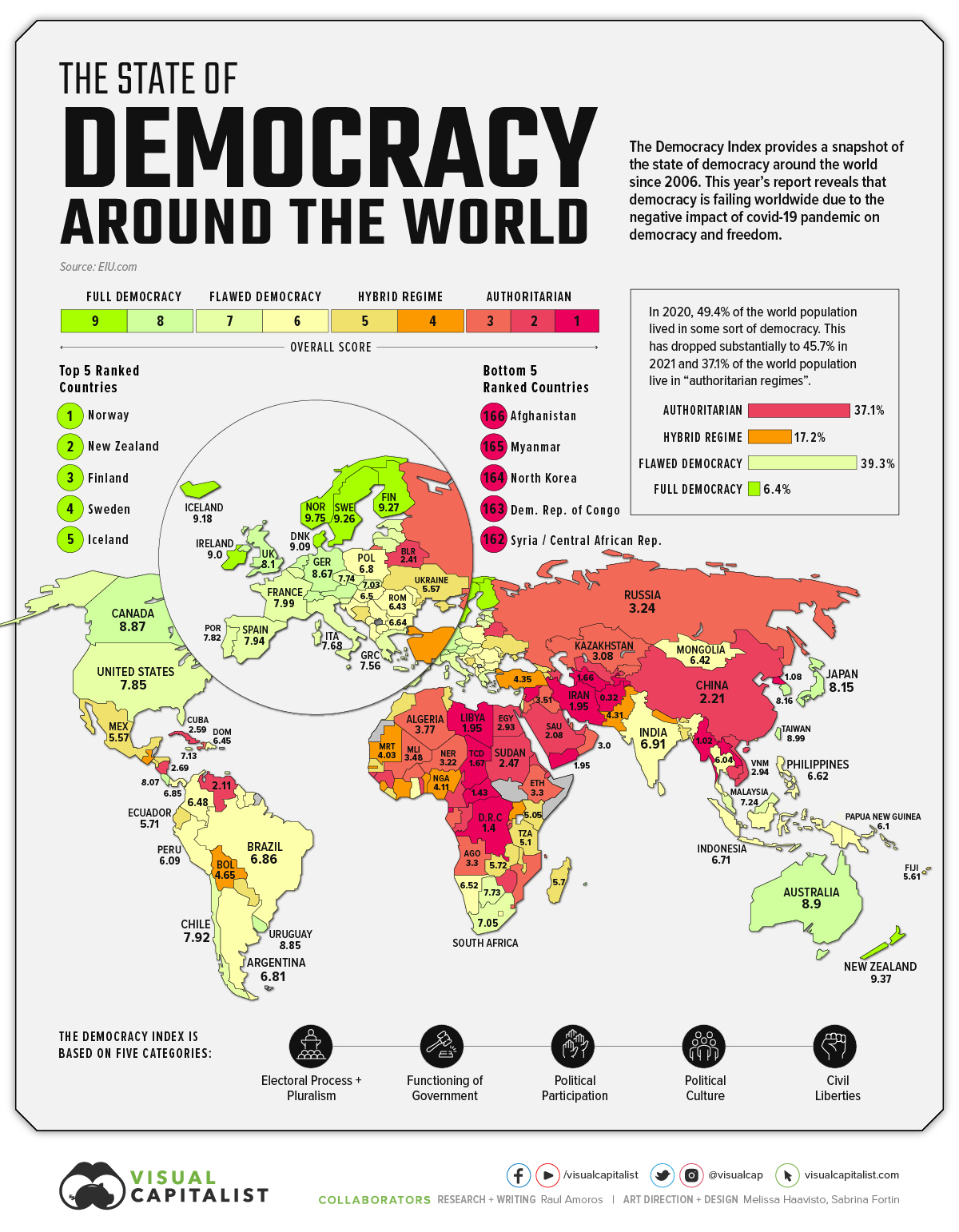
المعينة: حالة الديمقراطية حول العالم
يعيش سكان العالم (ما يقرب من ثمانية مليارات نسمة) في ظل مجموعة متنوعة من الظروف السياسية والثقافية. بشكل عام ، يمكن قياس هذه الظروف وتقديمها على مقياس متدرج بين "حرة" و "غير حرة" - المعنى الضمني هو أن الديمقراطية تكمن من جهة ، والسلطوية من جهة أخرى.
يعد تقرير مؤشر الديمقراطية لهذا العام من قبل وحدة المعلومات الاقتصادية (EIU) ، أحد هذه المحاولات لتطبيق درجة على البلدان بناءً على مدى تقاربها مع المثل الديمقراطية.
وفقًا لـ EIU ، فإن حالة الديمقراطية في أدنى مستوياتها منذ بدء المؤشر في عام 2006 ، ويعزى ذلك جزئيًا إلى القيود الوبائية التي جعلت العديد من البلدان تكافح من أجل تحقيق التوازن بين الصحة العامة والحرية الشخصية.
في تقرير هذا العام ، أبلغت وحدة المعلومات الاقتصادية عن انخفاض متوسط الدرجة العالمية من 5.37 إلى 5.28 ، وهو أكبر انخفاض منذ عام 2010 بعد الأزمة المالية العالمية. وهذا يترجم إلى حقيقة واقعة: 46٪ فقط من السكان يعيشون في ديمقراطية "من نوع ما".
دعونا نتعمق قليلاً في ما يعنيه هذا.
نسبة السكان حسب نوع النظام
في عام 2021 ، كان 37٪ من سكان العالم لا يزالون يعيشون في ظل نظام استبدادي. تتصدر أفغانستان هذه القائمة ، تليها ميانمار وكوريا الشمالية وجمهورية الكونغو الديمقراطية وسوريا. بالطبع ، الصين لديها نسبة كبيرة من السكان الذين يعيشون في ظل هذا النمط من النظام.
على الجانب الآخر من الطيف لدينا ديمقراطيات كاملة ، والتي تمثل فقط 6.4٪ من السكان. تتصدر النرويج هذه القائمة ، تليها نيوزيلندا وفنلندا والسويد وأيسلندا.
نوع النظام عدد الدول حصة البلدان حصة سكان العالم
ديمقراطيات كاملة 21 12.6٪ 6.4٪
الديمقراطيات المعيبة 53 31.7٪ 39.3٪
الأنظمة الهجينة 34 20.4٪ 17.2٪
الأنظمة الاستبدادية 59 35.3٪ 37.1٪
دعنا نستكشف خصائص كل نوع من أنواع الأنظمة الأربعة وفقًا لـ EIU:
الديمقراطيات الكاملة هي دول حيث:
كما ذكرنا سابقًا ، في عام 2021 ، انخفضت درجة الديمقراطية العالمية من 5.37 إلى 5.28. كان هذا مدفوعاً بانخفاض متوسط النقاط الإقليمية ، لكن لكل منطقة واقع مختلف. دعونا نلقي نظرة على الحالة الديمقراطية لكل منطقة في العالم.
الأمريكتان
أمريكا الشمالية (كندا والولايات المتحدة) هي المنطقة الأعلى تصنيفًا في مؤشر الديمقراطية بمتوسط درجات 8.36 ، لكن هذا انخفض بشكل كبير من 8.58 في عام 2020.
تخلى كلا البلدين عن مكانتهما في الترتيب العالمي ، ومع ذلك ، لا تزال كندا تحتفظ بمكانتها كدولة ديمقراطية كاملة.
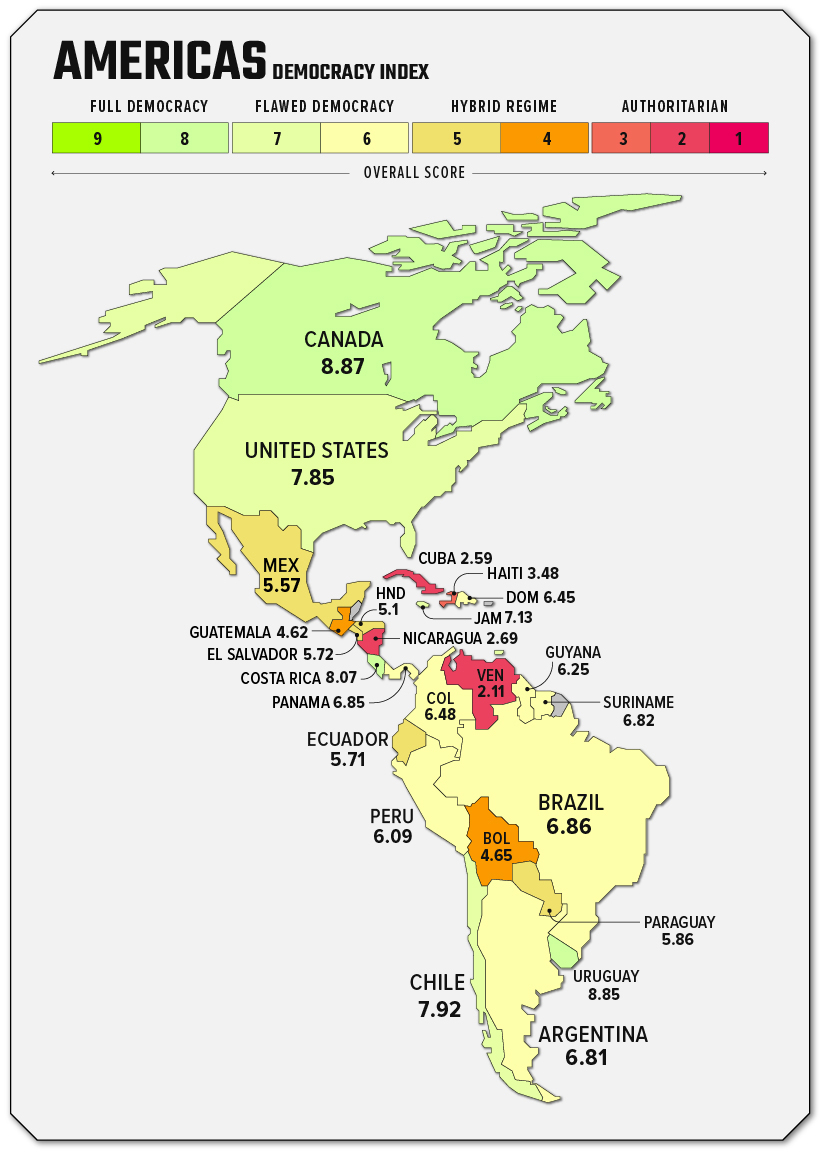
لا تزال الولايات المتحدة مصنفة من قبل EIU على أنها ديمقراطية معيبة ، وقد تم تصنيفها منذ عام 2016. ويشير التقرير إلى الاستقطاب الشديد و "التلاعب في توزيع الدوائر" كقضايا رئيسية تواجه البلاد. على الجانب المشرق ، لا تزال المشاركة السياسية في الولايات المتحدة قوية للغاية مقارنة ببقية العالم.
شهدت أمريكا اللاتينية ومنطقة البحر الكاريبي أكبر انخفاض في الدرجات الإقليمية في العالم. انخفضت هذه المنطقة من 6.09 في عام 2020 إلى 5.83 في عام 2021. ويظهر هذا الانخفاض السخط العام للسكان حول كيفية تعامل حكوماتهم مع الوباء.
في هذه المنطقة ، البلدان الوحيدة التي تندرج تحت فئة الديمقراطية الكاملة هي كوستاريكا وأوروغواي. على الجانب الآخر من الطيف ، تقع فنزويلا ونيكاراغوا وكوبا تحت تصنيف النظام الاستبدادي.
أوروبا
في عام 2021 ، أوروبا الغربية هي المنطقة التي تضم أكثر الديمقراطيات اكتمالاً في العالم.
في الواقع ، توجد أربعة من أفضل خمس ديمقراطيات كاملة في هذه المنطقة: النرويج وفنلندا والسويد وأيسلندا. حدث تخفيض ملحوظ في هذه المنطقة في إسبانيا ؛ تعتبر البلاد الآن ديمقراطية معيبة.
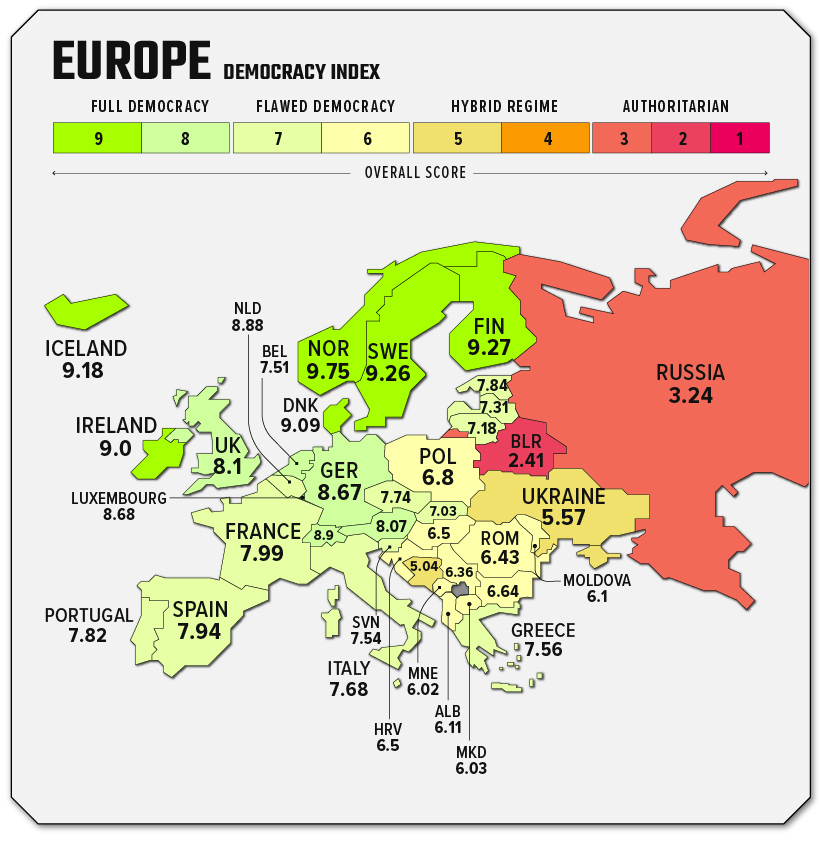
ترسم أوروبا الشرقية صورة مختلفة ، حيث لا توجد ديمقراطية كاملة واحدة. تم ترقية ثلاث دول (مولدوفا والجبل الأسود ومقدونيا الشمالية) من كونها أنظمة هجينة إلى ديمقراطيات معيبة.
انخفضت درجة أوكرانيا إلى 5.57 ، لتصبح منطقة مختلطة. كما تراجعت درجة روسيا إلى 3.24 مع الحفاظ على وضع النظام الاستبدادي. من المهم ملاحظة أن هذا التقرير الصادر عن وحدة الاستخبارات الاقتصادية قد نُشر قبل بدء غزو أوكرانيا ، ومن شبه المؤكد أن الصراع سيؤثر على النتائج الواردة في تقرير العام المقبل.
أفريقيا
تحتل منطقة إفريقيا جنوب الصحراء أكبر عدد من الدول في أسفل تصنيفات مؤشر الديمقراطية.
الحقيقة هي أن 23 دولة تعتبر "أنظمة استبدادية". وفي الوقت نفسه ، هناك 14 دولة ذات أنظمة هجينة ، وست دول في ظل ديمقراطية معيبة ، ودولة واحدة فقط ، موريشيوس ، تعتبر ديمقراطية كاملة.
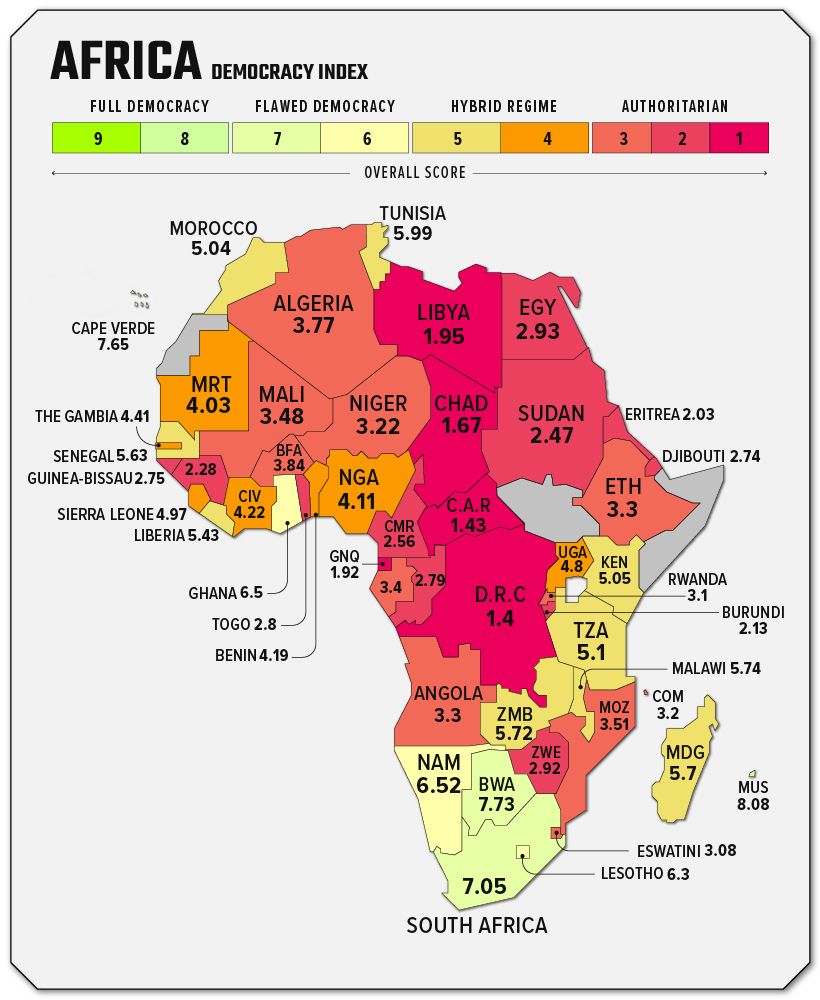
في شمال إفريقيا ، هناك أربع دول تعتبر أنظمة استبدادية: السودان ومصر وليبيا والجزائر. فقط المغرب وتونس يقعان في تصنيف النظام الهجين.
الشرق الأوسط وآسيا الوسطى
يتركز عدد كبير من البلدان المصنفة على أنها أنظمة استبدادية في هذه المنطقة. في الواقع ، النتيجة الإجمالية للديمقراطية في المنطقة الآن أقل مما كانت عليه قبل بداية الربيع العربي في عام 2010.
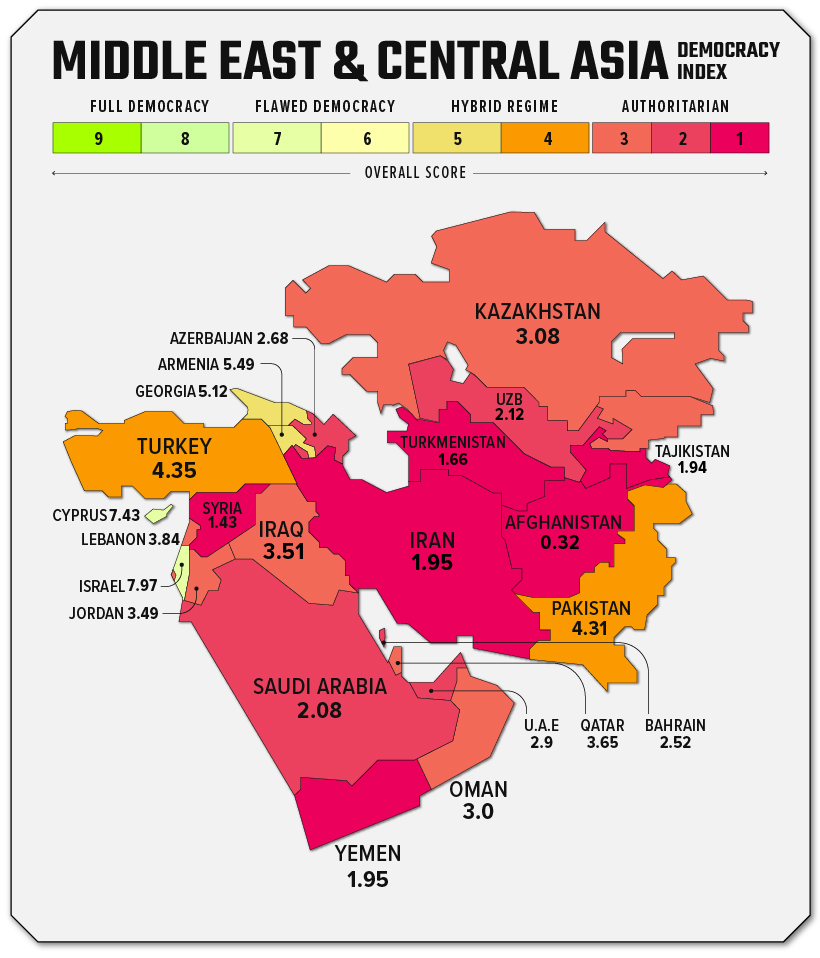
لا توجد دول تندرج تحت فئة الديمقراطية الكاملة في هذه المنطقة. تعتبر إسرائيل فقط (7.97) وقبرص (7.43) ديمقراطيات معيبة. تندرج تركيا وجورجيا وأرمينيا وباكستان ضمن فئة الأنظمة الهجينة ، وتعتبر بقية دول المنطقة أنظمة استبدادية.
شرق آسيا وأوقيانوسيا
هذه منطقة واسعة مليئة بالتناقضات. بصرف النظر عن أوروبا الغربية ، تحتوي شرق آسيا وأوقيانوسيا على أكثر الديمقراطيات اكتمالاً: نيوزيلندا وتايوان وأستراليا وكوريا الجنوبية واليابان. هناك أيضًا عدد كبير من البلدان التي تندرج تحت فئة الديمقراطيات المعيبة.
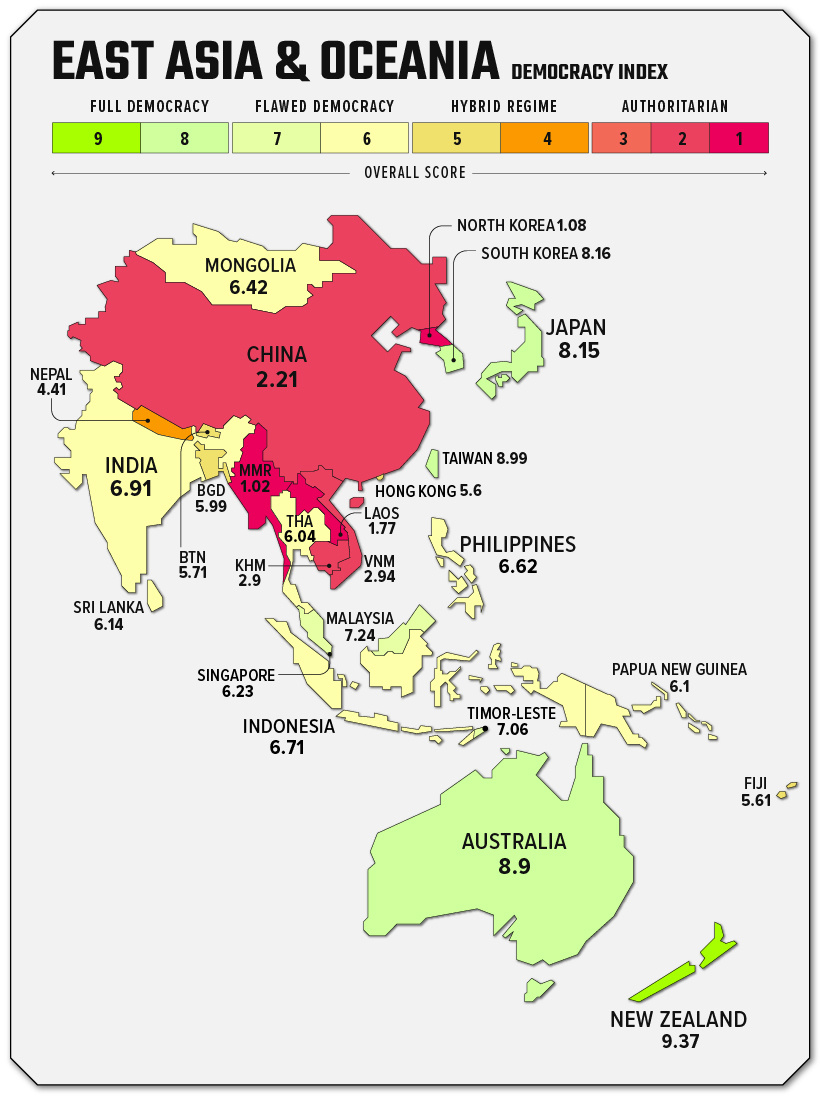
تجدر الإشارة إلى أن بعض العلاقات الجيوسياسية الأكثر إثارة للجدل هي بين الجيران مع وجود اختلافات كبيرة في درجاتهم: الصين وتايوان ، أو كوريا الشمالية والجنوبية أمثلة على هذا التجاور.
تراجع مستويات الديمقراطية العالمية
بعد عامين من إصابة العالم بالوباء ، يمكننا أن نرى أن الديمقراطية العالمية في اتجاه تنازلي.
شهدت النتيجة العالمية لكل منطقة انخفاضًا ، باستثناء أوروبا الغربية ، التي ظلت ثابتة. من بين 167 دولة ، شهدت 74 (44٪) انخفاضًا في درجات الديمقراطية.
مع استمرار رفع القيود الوبائية ، هل ستعود الديمقراطية في عام 2022؟

اشترك في النشرة الإخبارية المجانية واستمتع بذهنك بشكل يومي:
مواضيع ذات صلة:خريطةسياسةالسلطويةفهرسديمقراطيةEiuدولة ديمقراطيةالنظام الحاكمالتعددية
التالي
ما هي الدول التي تثق في حكومتها ، وأيها لا تثق؟
لا تفوت
المعينة: الطاقة الشمسية وطاقة الرياح حسب الدولة
انقر للحصول على التعليقات
خريطة: حالة الديمقراطية العالمية في عام 2022
نشرت
قبل 3 أشهر
على
13 مايو 2022
بواسطة
راؤول أموروس
مقالة / تحرير:
تصميم الرسومات:
سقسقة
يشارك
يشارك
رديت
البريد الإلكتروني

المعينة: حالة الديمقراطية حول العالم
يعيش سكان العالم (ما يقرب من ثمانية مليارات نسمة) في ظل مجموعة متنوعة من الظروف السياسية والثقافية. بشكل عام ، يمكن قياس هذه الظروف وتقديمها على مقياس متدرج بين "حرة" و "غير حرة" - المعنى الضمني هو أن الديمقراطية تكمن من جهة ، والسلطوية من جهة أخرى.
يعد تقرير مؤشر الديمقراطية لهذا العام من قبل وحدة المعلومات الاقتصادية (EIU) ، أحد هذه المحاولات لتطبيق درجة على البلدان بناءً على مدى تقاربها مع المثل الديمقراطية.
وفقًا لـ EIU ، فإن حالة الديمقراطية في أدنى مستوياتها منذ بدء المؤشر في عام 2006 ، ويعزى ذلك جزئيًا إلى القيود الوبائية التي جعلت العديد من البلدان تكافح من أجل تحقيق التوازن بين الصحة العامة والحرية الشخصية.
في تقرير هذا العام ، أبلغت وحدة المعلومات الاقتصادية عن انخفاض متوسط الدرجة العالمية من 5.37 إلى 5.28 ، وهو أكبر انخفاض منذ عام 2010 بعد الأزمة المالية العالمية. وهذا يترجم إلى حقيقة واقعة: 46٪ فقط من السكان يعيشون في ديمقراطية "من نوع ما".
دعونا نتعمق قليلاً في ما يعنيه هذا.
نسبة السكان حسب نوع النظام
في عام 2021 ، كان 37٪ من سكان العالم لا يزالون يعيشون في ظل نظام استبدادي. تتصدر أفغانستان هذه القائمة ، تليها ميانمار وكوريا الشمالية وجمهورية الكونغو الديمقراطية وسوريا. بالطبع ، الصين لديها نسبة كبيرة من السكان الذين يعيشون في ظل هذا النمط من النظام.
على الجانب الآخر من الطيف لدينا ديمقراطيات كاملة ، والتي تمثل فقط 6.4٪ من السكان. تتصدر النرويج هذه القائمة ، تليها نيوزيلندا وفنلندا والسويد وأيسلندا.
نوع النظام عدد الدول حصة البلدان حصة سكان العالم
ديمقراطيات كاملة 21 12.6٪ 6.4٪
الديمقراطيات المعيبة 53 31.7٪ 39.3٪
الأنظمة الهجينة 34 20.4٪ 17.2٪
الأنظمة الاستبدادية 59 35.3٪ 37.1٪
دعنا نستكشف خصائص كل نوع من أنواع الأنظمة الأربعة وفقًا لـ EIU:
الديمقراطيات الكاملة هي دول حيث:
- احترام الحريات المدنية والحريات السياسية الأساسية
- وجود أنظمة سارية المفعول من الضوابط والتوازنات الحكومية
- هناك مشاكل محدودة في الأداء الديمقراطي
- وسائل الإعلام متنوعة ومستقلة
- الانتخابات عادلة وحرة
- يتم تكريم الحريات الأساسية ولكن قد يكون لها مشاكل
- هناك قضايا في أداء الحكم
- التزوير أو المخالفات الانتخابية تحدث بانتظام
- يتم الضغط على المعارضة السياسية
- الفساد منتشر على نطاق واسع وسيادة القانون تميل إلى الضعف
- تتعرض وسائل الإعلام للضغط والمضايقة
- هناك قضايا في أداء الحكم
- التعددية السياسية غير موجودة أو محدودة
- يحكم السكان أنظمة ملكية أو ديكتاتوريات مطلقة
- تعد الانتهاكات والتجاوزات على الحريات المدنية أمرًا شائعًا
- الانتخابات ليست عادلة أو حرة (إذا حدثت على الإطلاق)
- وسائل الإعلام مملوكة للدولة أو يتحكم فيها النظام الحاكم بشكل مباشر أو غير مباشر
- النظام القضائي ليس مستقلاً
- يخضع انتقاد الحكومة للرقابة
كما ذكرنا سابقًا ، في عام 2021 ، انخفضت درجة الديمقراطية العالمية من 5.37 إلى 5.28. كان هذا مدفوعاً بانخفاض متوسط النقاط الإقليمية ، لكن لكل منطقة واقع مختلف. دعونا نلقي نظرة على الحالة الديمقراطية لكل منطقة في العالم.
الأمريكتان
أمريكا الشمالية (كندا والولايات المتحدة) هي المنطقة الأعلى تصنيفًا في مؤشر الديمقراطية بمتوسط درجات 8.36 ، لكن هذا انخفض بشكل كبير من 8.58 في عام 2020.
تخلى كلا البلدين عن مكانتهما في الترتيب العالمي ، ومع ذلك ، لا تزال كندا تحتفظ بمكانتها كدولة ديمقراطية كاملة.

لا تزال الولايات المتحدة مصنفة من قبل EIU على أنها ديمقراطية معيبة ، وقد تم تصنيفها منذ عام 2016. ويشير التقرير إلى الاستقطاب الشديد و "التلاعب في توزيع الدوائر" كقضايا رئيسية تواجه البلاد. على الجانب المشرق ، لا تزال المشاركة السياسية في الولايات المتحدة قوية للغاية مقارنة ببقية العالم.
شهدت أمريكا اللاتينية ومنطقة البحر الكاريبي أكبر انخفاض في الدرجات الإقليمية في العالم. انخفضت هذه المنطقة من 6.09 في عام 2020 إلى 5.83 في عام 2021. ويظهر هذا الانخفاض السخط العام للسكان حول كيفية تعامل حكوماتهم مع الوباء.
في هذه المنطقة ، البلدان الوحيدة التي تندرج تحت فئة الديمقراطية الكاملة هي كوستاريكا وأوروغواي. على الجانب الآخر من الطيف ، تقع فنزويلا ونيكاراغوا وكوبا تحت تصنيف النظام الاستبدادي.
أوروبا
في عام 2021 ، أوروبا الغربية هي المنطقة التي تضم أكثر الديمقراطيات اكتمالاً في العالم.
في الواقع ، توجد أربعة من أفضل خمس ديمقراطيات كاملة في هذه المنطقة: النرويج وفنلندا والسويد وأيسلندا. حدث تخفيض ملحوظ في هذه المنطقة في إسبانيا ؛ تعتبر البلاد الآن ديمقراطية معيبة.

ترسم أوروبا الشرقية صورة مختلفة ، حيث لا توجد ديمقراطية كاملة واحدة. تم ترقية ثلاث دول (مولدوفا والجبل الأسود ومقدونيا الشمالية) من كونها أنظمة هجينة إلى ديمقراطيات معيبة.
انخفضت درجة أوكرانيا إلى 5.57 ، لتصبح منطقة مختلطة. كما تراجعت درجة روسيا إلى 3.24 مع الحفاظ على وضع النظام الاستبدادي. من المهم ملاحظة أن هذا التقرير الصادر عن وحدة الاستخبارات الاقتصادية قد نُشر قبل بدء غزو أوكرانيا ، ومن شبه المؤكد أن الصراع سيؤثر على النتائج الواردة في تقرير العام المقبل.
أفريقيا
تحتل منطقة إفريقيا جنوب الصحراء أكبر عدد من الدول في أسفل تصنيفات مؤشر الديمقراطية.
الحقيقة هي أن 23 دولة تعتبر "أنظمة استبدادية". وفي الوقت نفسه ، هناك 14 دولة ذات أنظمة هجينة ، وست دول في ظل ديمقراطية معيبة ، ودولة واحدة فقط ، موريشيوس ، تعتبر ديمقراطية كاملة.

في شمال إفريقيا ، هناك أربع دول تعتبر أنظمة استبدادية: السودان ومصر وليبيا والجزائر. فقط المغرب وتونس يقعان في تصنيف النظام الهجين.
الشرق الأوسط وآسيا الوسطى
يتركز عدد كبير من البلدان المصنفة على أنها أنظمة استبدادية في هذه المنطقة. في الواقع ، النتيجة الإجمالية للديمقراطية في المنطقة الآن أقل مما كانت عليه قبل بداية الربيع العربي في عام 2010.

لا توجد دول تندرج تحت فئة الديمقراطية الكاملة في هذه المنطقة. تعتبر إسرائيل فقط (7.97) وقبرص (7.43) ديمقراطيات معيبة. تندرج تركيا وجورجيا وأرمينيا وباكستان ضمن فئة الأنظمة الهجينة ، وتعتبر بقية دول المنطقة أنظمة استبدادية.
شرق آسيا وأوقيانوسيا
هذه منطقة واسعة مليئة بالتناقضات. بصرف النظر عن أوروبا الغربية ، تحتوي شرق آسيا وأوقيانوسيا على أكثر الديمقراطيات اكتمالاً: نيوزيلندا وتايوان وأستراليا وكوريا الجنوبية واليابان. هناك أيضًا عدد كبير من البلدان التي تندرج تحت فئة الديمقراطيات المعيبة.

تجدر الإشارة إلى أن بعض العلاقات الجيوسياسية الأكثر إثارة للجدل هي بين الجيران مع وجود اختلافات كبيرة في درجاتهم: الصين وتايوان ، أو كوريا الشمالية والجنوبية أمثلة على هذا التجاور.
تراجع مستويات الديمقراطية العالمية
بعد عامين من إصابة العالم بالوباء ، يمكننا أن نرى أن الديمقراطية العالمية في اتجاه تنازلي.
شهدت النتيجة العالمية لكل منطقة انخفاضًا ، باستثناء أوروبا الغربية ، التي ظلت ثابتة. من بين 167 دولة ، شهدت 74 (44٪) انخفاضًا في درجات الديمقراطية.
مع استمرار رفع القيود الوبائية ، هل ستعود الديمقراطية في عام 2022؟

اشترك في النشرة الإخبارية المجانية واستمتع بذهنك بشكل يومي:
مواضيع ذات صلة:خريطةسياسةالسلطويةفهرسديمقراطيةEiuدولة ديمقراطيةالنظام الحاكمالتعددية
التالي
ما هي الدول التي تثق في حكومتها ، وأيها لا تثق؟
لا تفوت
المعينة: الطاقة الشمسية وطاقة الرياح حسب الدولة
انقر للحصول على التعليقات
التعديل الأخير:
SEARCH

الرأسمالي البصري
الإشتراك
- طاقة
تصور أكبر منتجي النفط في العالم
استهلاك العمر للوقود الأحفوري ، تصور
تصور: البطارية مقابل البطارية. خلية وقود الهيدروجين
من الذي لا يزال يشتري الوقود الأحفوري من روسيا؟
المعينة: ما هي الموانئ التي تستقبل معظم شحنات الوقود الأحفوري الروسية؟
- خرائط
التصنيف: البلدان العشرين ذات الأسرع تراجعا في عدد السكان
خريطة إنفوجرافيك أيقونية تقارن بين جبال وأنهار العالم
المعين: عقد من النمو السكاني والانحدار في مقاطعات الولايات المتحدة
خريطة: حالة الديمقراطية العالمية في عام 2022
المعينة: الطاقة الشمسية وطاقة الرياح حسب الدولة
- التعدين
المعينة: أكبر 10 مناجم ذهب في العالم ، حسب الإنتاج
50 معادن مهمة لأمن الولايات المتحدة
تصور هيمنة الصين على معادن الطاقة النظيفة
الجدول الدوري لعوائد السلع (2012-2021)
تصور وفرة العناصر في القشرة الأرضية
- لون أخضر
الجدول الزمني: تدجين الحيوانات
5 أشياء يجب معرفتها عن موجة الحر الحارقة في أوروبا
ما هي الأنواع الخمسة الرئيسية للطاقة المتجددة؟
الرسوم المتحركة: أكبر توربينات الرياح في العالم
البيولوجيا التركيبية: 3.6 تريليون دولار علمي يغير الحياة كما نعرفها
- الشركات المميزة
 برنامج المبدعين
برنامج المبدعين
- التقارير
- القنوات
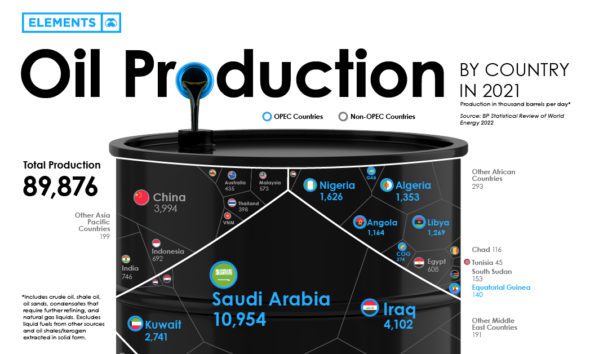
طاقةمنذ 3 أيام
تصور أكبر منتجي النفط في العالم
بلغ متوسط إنتاج النفط العالمي 89.8 مليون برميل من النفط يوميًا في عام 2021. وهنا أكبر منتجي النفط في العالم.
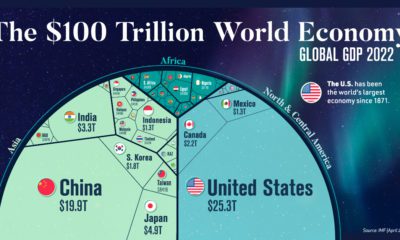
الأسواق12 يوليو 2022
الاقتصاد العالمي البالغ 100 تريليون دولار في مخطط واحد

تكنولوجيا7 يوليو 2022
تطور وسائل الإعلام: تصور مستقبل مبني على البيانات
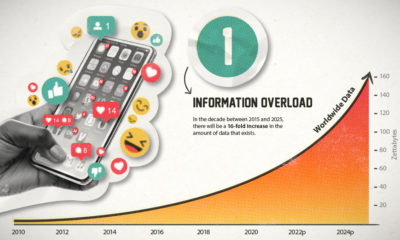
متفرقات5 يوليو 2022
5 Megatrends تغذي صعود سرد القصص بالبيانات
آخر
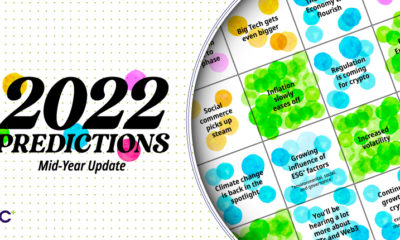
VC +2 منذ أيام
ما الجديد على VC + في أغسطس؟
هذا الشهر ، جنبًا إلى جنب مع الميزات المجدولة بانتظام ، يتحقق إرسالنا الخاص من كيفية تحول توقعات الخبراء لعام 2022 ...

 برنامج المبدعين
برنامج المبدعينتكنولوجيا2 منذ أيام
الرسوم المتحركة: صعود وسقوط متصفحات الويب الشعبية منذ 1994

اعمالمنذ 3 أيام
تم تصويره: أفضل 25 صحيفة أمريكية حسب التداول اليومي

 برنامج المبدعين
برنامج المبدعينمتفرقاتمنذ 3 أيام
مقارنة قوانين الأسلحة والوفيات المرتبطة بالأسلحة في جميع أنحاء أمريكا

اقتصادمنذ 3 أيام
ما مقدار الأراضي التي تسيطر عليها الولايات المتحدة العسكرية في كل دولة؟

اعمالقبل 4 أيام
المرتبة: أكبر شركات شحن الحاويات في العالم

الأسواققبل 5 أيام
3 أسباب للأسمدة ونقص الغذاء
الإعلانات

جمع

التركيبة السكانية21 يوليو 2022
التصنيف: البلدان العشرين ذات الأسرع تراجعا في عدد السكان

تعليم المستثمر13 يوليو 2022
البلدان التي لديها أعلى مخاطر تقصير في عام 2022

 برنامج المبدعين
برنامج المبدعينمتفرقات8 يوليو 2022
مقارنة تكلفة المعيشة حول العالم

 برنامج المبدعين
برنامج المبدعينمتفرقات1 يوليو 2022
خريطة لوغاريتمية للكون المرصود بأكمله

تمويل شخصي5 يوليو 2022
ما الذي يتطلبه الأمر لتصبح ثريًا في أمريكا؟

زراعة22 يوليو 2022
الجدول الزمني: تدجين الحيوانات
تدفق المعلومات
التعديل الأخير:

طاقةمنذ 3 أيام
تصور أكبر منتجي النفط في العالم
بلغ متوسط إنتاج النفط العالمي 89.8 مليون برميل من النفط يوميًا في عام 2021. وهنا أكبر منتجي النفط في العالم.

الأسواق12 يوليو 2022
الاقتصاد العالمي البالغ 100 تريليون دولار في مخطط واحد

تكنولوجيا7 يوليو 2022
تطور وسائل الإعلام: تصور مستقبل مبني على البيانات

متفرقات5 يوليو 2022
5 Megatrends تغذي صعود سرد القصص بالبيانات
آخر

VC +2 منذ أيام
ما الجديد على VC + في أغسطس؟
هذا الشهر ، جنبًا إلى جنب مع الميزات المجدولة بانتظام ، يتحقق إرسالنا الخاص من كيفية تحول توقعات الخبراء لعام 2022 ...

 برنامج المبدعين
برنامج المبدعينتكنولوجيا2 منذ أيام
الرسوم المتحركة: صعود وسقوط متصفحات الويب الشعبية منذ 1994

اعمالمنذ 3 أيام
تم تصويره: أفضل 25 صحيفة أمريكية حسب التداول اليومي

 برنامج المبدعين
برنامج المبدعينمتفرقاتمنذ 3 أيام
مقارنة قوانين الأسلحة والوفيات المرتبطة بالأسلحة في جميع أنحاء أمريكا

اقتصادمنذ 3 أيام
ما مقدار الأراضي التي تسيطر عليها الولايات المتحدة العسكرية في كل دولة؟

اعمالقبل 4 أيام
المرتبة: أكبر شركات شحن الحاويات في العالم

الأسواققبل 5 أيام
3 أسباب للأسمدة ونقص الغذاء
الإعلانات

جمع

التركيبة السكانية21 يوليو 2022
التصنيف: البلدان العشرين ذات الأسرع تراجعا في عدد السكان

تعليم المستثمر13 يوليو 2022
البلدان التي لديها أعلى مخاطر تقصير في عام 2022

 برنامج المبدعين
برنامج المبدعينمتفرقات8 يوليو 2022
مقارنة تكلفة المعيشة حول العالم

 برنامج المبدعين
برنامج المبدعينمتفرقات1 يوليو 2022
خريطة لوغاريتمية للكون المرصود بأكمله

تمويل شخصي5 يوليو 2022
ما الذي يتطلبه الأمر لتصبح ثريًا في أمريكا؟

زراعة22 يوليو 2022
الجدول الزمني: تدجين الحيوانات
تدفق المعلومات
كن مبدعا> مجتمع المبدعين
تعرف على الرأسمالي البصري
مجتمع المبدعين
تقديم أفضل رواة البيانات من جميع أنحاء العالم.
اقرأ عنهم وكيف يمكنك دعم عملهم.
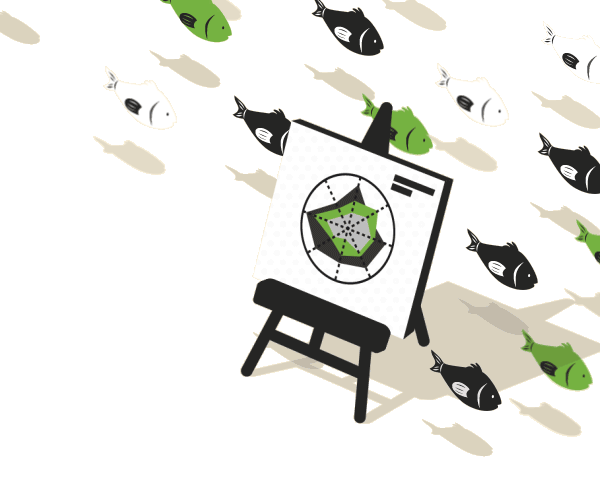
المبدعين
برنامج المبدعين
بواسطة VISUAL CAPITALIST

هل أنت جاهز لإرسال الرسم الخاص بك إلى برنامج Creator؟
إرسال العمل
تعرف على الرأسمالي البصري
مجتمع المبدعين
تقديم أفضل رواة البيانات من جميع أنحاء العالم.
اقرأ عنهم وكيف يمكنك دعم عملهم.

المبدعين

براتاب فاردان
تصور البيانات ، الخرائط ، الهند
براتاب هو عالم بيانات وراوي قصص بصري ومؤسس شركة Stats of India ، التي تساعد ...

كشيش راستوجي
تصور البيانات ، تابلوه ، علم البيانات
أنا متحمس لتصور البيانات ولدي معرفة وممارسة في التعلم الآلي. أنا أؤمن بالاستفادة من البيانات ...

استوديوهات NeoMam
تصور البيانات ، الخرائط ، الدراسات العالمية
NeoMam Studios هو استوديو إبداعي مقره في المملكة المتحدة مهمته إنشاء محتوى رقمي ...

آدم سيمينغتون (PythonMaps)
البيانات ، تصور البيانات ، رسم الخرائط
أنا عالم بيانات جغرافية مكانية ، وأقود فريق علوم البيانات في Geollect Ltd. وأدير ...

سيباستيان جراف
تصور البيانات ، الجغرافيا السياسية
أنا طالبة أعيش حاليًا في ألمانيا ولكن لدي جذور في جنوب إفريقيا والمملكة المتحدة. لي...

فلوران لافيرجن
التوضيح ، تصور البيانات ، العلوم
أنا رسامة رقمية وعشاق البيانات. خلفيتي الأكاديمية وتركيزي الإبداعي الرئيسي هما العلوم البيئية ...
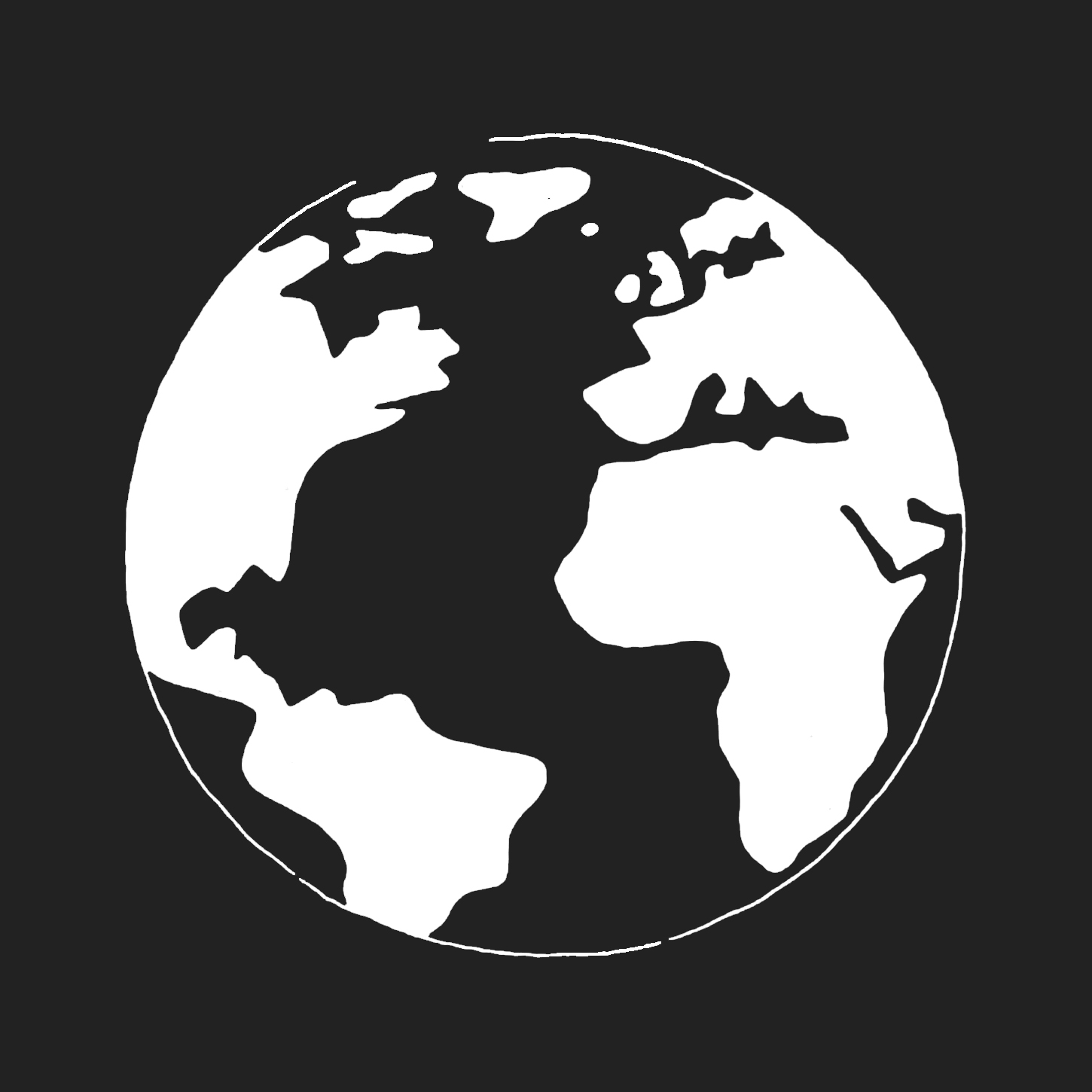
مركز وودويل لأبحاث المناخ
خرائط
يعمل مركز وودويل لأبحاث المناخ على تطوير الاكتشافات العلمية والحلول لمواجهة تحديات المناخ في العالم. لدينا الرائد عالميا ...

شيمدي نوسو
تصور البيانات ، تابلوه ، تصميم
Chimdi هو مدير تصور البيانات وسفير Tableau العام الذي يؤمن بالاستفادة من البيانات والتصميم ...

إنريكي ميندوزا
العدالة الاجتماعية والبيئة والعلوم والتكنولوجيا
إنريك ميندوزا شغوف بتصور البيانات وتصميم المعلومات الذي يساعد محترفي البيانات والأعمال ...

بابلو الفاريز
تصور البيانات ، تصميم البيانات ، تصميم المعلومات
أنا مصمم للتعلم والبيانات وأهتم بتوصيل الرؤى من البيانات باستخدام السرد و ...

Elbie Bentley
الخرائط والتاريخ والجغرافيا
إلبي بنتلي رسام خرائط وعالم جغرافي أكاديمي مقيم في اسطنبول بتركيا. التركيز الأساسي لأبحاثها ...

جونو هاي
العالم ، اسكتشات ، عام
جونو هو مبتكر Sketchplanations ، في مهمة لوضع حكمة العالم في ...

روبن بيرج ماتيسين
عدم المساواة الاقتصادية ، تدفقات الأسلحة ، الديمقراطية
أنا عالم سياسي أعمل في جامعة بيرغن بالنرويج. يركز بحثي على ...

فيكتور ديبري
تصور البيانات ، وعلوم البيانات ، والذكاء الاصطناعي
فيكتور هو محلل بيانات يحب إنشاء تصورات مؤثرة ورائعة المظهر. بعد دراسة الرياضيات المتقدمة ...

اللاتينومترية
أمريكا اللاتينية ، الاتجاهات
هدفنا هو مساعدة أمريكا اللاتينية وصناع القرار فيها (رواد الأعمال ، والمستثمرون ، والاقتصاديون ، وواضعو السياسات ، وقادة الأعمال) ...

زينب ايوديميجي
تصور البيانات وتحليلها ولوحة القيادة
زينب هي عالمة بيانات لديها انجذاب لتصور البيانات و Tableau Public ...

إيفيت كوفاكس
عرض مرئي للمعلومات
إيفيت هو مطور ومصمم تصور البيانات (Tableau Zen Master and Public Ambassador) الذي يعلم البيانات ...

نيل ريتشاردز
هندسي ، غير تقليدي ، تصميم مدفوع
نيل هو أربع مرات Tableau Visionary (المعروف سابقًا باسم Zen Master) ، وهو هاوي لتصور البيانات ، ومدون ، ...

أثول الكسندر
الاحداث الحالية
أثول هو مصمم رقمي متخصص في تصميم الرسوم البيانية والحركة. من ولاية كيرالا ، الهند ، جاء أثول ...

ألاسدير راي
الخرائط والجغرافيا
ألاسدير هو صانع خرائط ومحلل بيانات ومؤلف وراوي قصص مرئي معترف به دوليًا. كان أستاذًا في الهندسة الحضرية سابقًا ...

كريستينا كوستاندي
تصور البيانات ، وعلوم البيانات ، والتفاعلية
كريستينا متخصصة في تصور البيانات تساعد في إنشاء تجارب بيانات تفاعلية في Visual Capitalist. أنها تحمل...

مارك بيلان
تصور البيانات ، علم الأحياء الفلكي ، الجيوكيمياء
مارك هو صحفي رسومي علمي ومتواصل بصري ، يعمل عند تقاطع الفن والعلم ...

مخطط شيت
عام
من قاع المحيط إلى الفضاء الخارجي ، عالمنا مليء بالبيانات. و هو...

إليونورا نازاندر
الاقتصاد السلوكي
إليونورا هو مستشار إداري ومحترف في التحليلات المتقدمة يحب إنشاء رؤى تجارية من البيانات.
-
جوليا دي أميسيس
البيئة ، علم البيئة ، الجغرافيا
منذ تخرجها في عام 2012 ، عملت جوليا في مشاريع متعددة التخصصات كمصممة ورسامة ، كلاهما ...
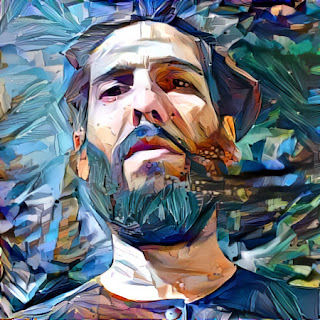
بابلو كارلوس بوداسي
الكون ، الوقت ، الرسم التوضيحي
بابلو من ميندوزا ، الأرجنتين ، يسعى لفهم الألغاز العظيمة في ...
- إليانور لوتز

علم الأحياء والعلوم والتوضيح
إليانور هي مصممة متخصصة في البيانات وتصور العلوم. حاصلة على درجة الدكتوراه في علم الأحياء من ...

جيمس أودونوغ
علوم الكواكب والغلاف الجوي
جيمس هو عالم كواكب مع وكالة الفضاء اليابانية (JAXA) ومقرها خارج طوكيو. هو...

أندرس سونديل
التمثيل السياسي والرأي العام والسياسة
أندرس حاصل على درجة الدكتوراه في العلوم السياسية من جامعة جوتنبرج بالسويد حيث يعمل كمساعد ...
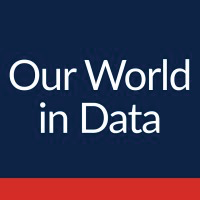
عالمنا في البيانات
البيانات والمعلومات
عالمنا في البيانات هو فريق صغير مكرس لجعل المعرفة حول العالم الكبير ...

جيمس إيجل
التمويل والاستثمار
جيمس هو منشئ المحتوى وسرد القصص الذي يحظى بتقدير كبير ، وقد نشأ في قطاع الخدمات المالية. هو...
برنامج المبدعين
بواسطة VISUAL CAPITALIST

هل أنت جاهز لإرسال الرسم الخاص بك إلى برنامج Creator؟
إرسال العمل
ربما يعجبك أيضا
المهاجرون المفقودون: تصور الأرواح المفقودة على طول البحر الأبيض المتوسط
في كل عام ، يقوم آلاف المهاجرين برحلة على طول شرق البحر الأبيض المتوسط للوصول إلى الاتحاد الأوروبي. البعض لا يصل إلى وجهته أبدًا.
 برنامج المبدعين
برنامج المبدعين

نشرت
منذ 4 أسابيع
على
4 يوليو 2022
بواسطة
كارمن انج
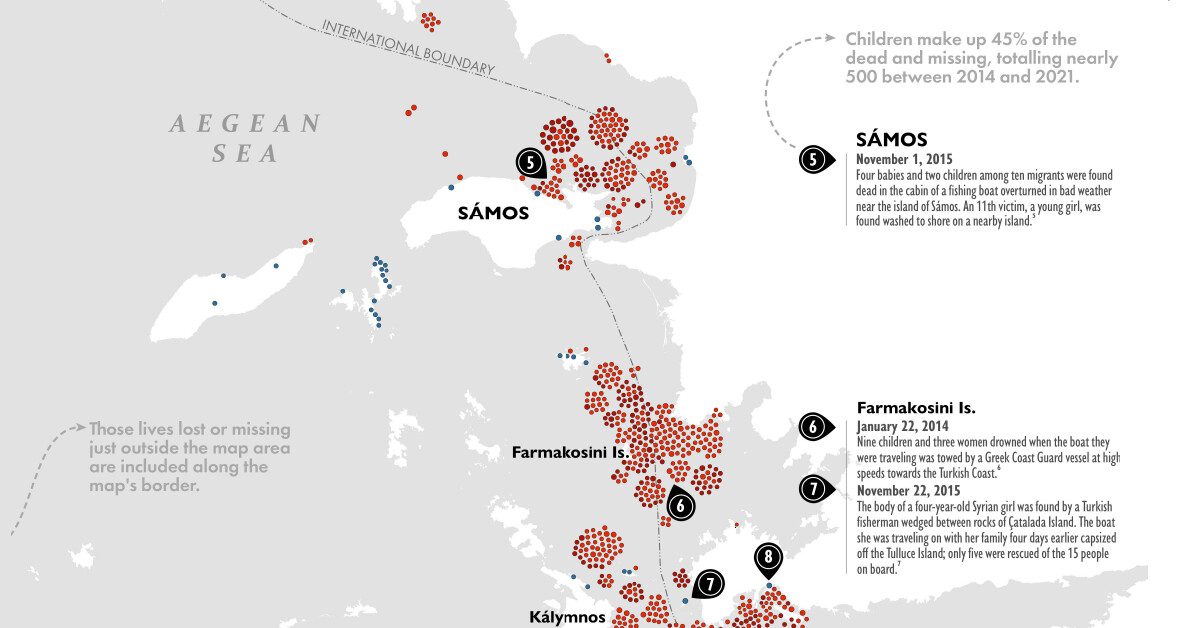
المهاجرون المفقودون: أرواح مفقودة على طول البحر الأبيض المتوسط
في كل عام ، يفر آلاف المهاجرين من البلدان التي مزقتها الحرب بحثًا عن اللجوء.
حتى قبل أزمة المهاجرين التي سببتها الحرب الروسية الأوكرانية ، كانت أوروبا النقطة المحورية في العقد الماضي. العديد من اللاجئين من الصراعات في أفريقيا وآسيا ، بما في ذلك من سوريا وأفغانستان والعراق ، وقد سافروا إلى أوروبا على طول طريق الهجرة شرق البحر الأبيض المتوسط - ممر خطير عبر بحر إيجه الذي ينسج على طول سواحل اليونان وتركيا.
رحلة الوصول إلى أوروبا محفوفة بالمخاطر ، وبعض المهاجرين الذين يحاولون العبور لا يجتازونها أبدًا. باستخدام بيانات من المنظمة الدولية للهجرة (IOM) ، تصور هذه الخريطة التي أعدها Elbie Bentley الوفيات والاختفاء المبلغ عنها على طول شرق البحر الأبيض المتوسط من 2014 إلى 2021.
مستوحاة من أولئك الذين لم يعبروا من تأليف ليفي ويسترفيلد ، يتم التقاط كل حياة مفقودة بنقطة خاصة بها ، في محاولة لإضفاء الطابع الإنساني على البيانات.
الأزمة الأوروبية 2015
تم الإبلاغ عن 1863 حالة وفاة واختفاء على طول شرق البحر الأبيض المتوسط بين عامي 2014 و 2021.
جاء ما يقرب من نصف هذه التسجيلات من عام 2015 أثناء أزمة المهاجرين الأوروبية ، عندما طلب مليون شخص اللجوء في الاتحاد الأوروبي ، وهو رقم قياسي .
سافر حوالي 800 ألف من أصل مليون مهاجر إلى اليونان عبر تركيا ، مع فرار العديد من اللاجئين من الحرب الأهلية في سوريا.
أزمة المهاجرين الأوروبيين حسب السنة حالات الوفاة والاختفاء المبلغ عنها
2014 101
2015 804
2016 434
2017 62
2018 174
2019 71
2020 106
2021 111
In an attempt to control the situation, the EU and Turkey signed a migration deal in March 2016 that agreed to send back migrants who did not receive official permission to enter the EU.
Though the agreement drastically reduced the number of people traveling through Turkey to Greece, thousands still make the dangerous journey across the Aegean Sea each year. In 2021, 111 people were reported dead or missing along the Eastern Mediterranean.
The Dangerous Journey
According to the International Organization for Migration, the most common cause of death along the Eastern Mediterranean is drowning.
While the journey is only 5.4 nautical miles or less, transportation conditions to Greece are not always safe. Boats are sometimes forced into tumultuous waters, according to migrants who’ve experienced the journey firsthand.
And these boats are often severely underequipped and overcrowded—rubber dinghies designed to carry a dozen people are sometimes loaded with up to 60 passengers.
Safer means of transportation are available, but the costs are steep. According to Frontex, the European Border and Coast Guard Agency, it could cost a family an average of €10,000 to travel by yacht.
Rescue Efforts for Migrants is Needed
Further complicating the dangerous journey is a lack of rescue resources.
وفقًا لتقرير عام 2021 الصادر عن المنظمة الدولية للهجرة ، لا يوجد لدى الاتحاد الأوروبي حاليًا فريق بحث وإنقاذ متخصص. بدلاً من ذلك ، يقع العبء على الدول الفردية للقيام بدوريات في مياهها.
إلى أن تتم معالجة الأزمة بشكل أفضل أو تبدأ النزاعات المحلية في حلها ، ستكون هناك حاجة ملحة لزيادة عمليات الإنقاذ وبروتوكول هجرة موحد للمساعدة في التخفيف من عدد وفيات واختفاء المهاجرين كل عام.
أكمل القراءة
تكنولوجيا
33 مشاكل مع الوسائط في مخطط واحد
في مخطط المعلومات هذا ، قمنا بفهرسة 33 مشكلة في النظام البيئي الاجتماعي ووسائل الإعلام.

نشرت
1 قبل شهر
على
29 يونيو 2022
بواسطة
نيك روتلي
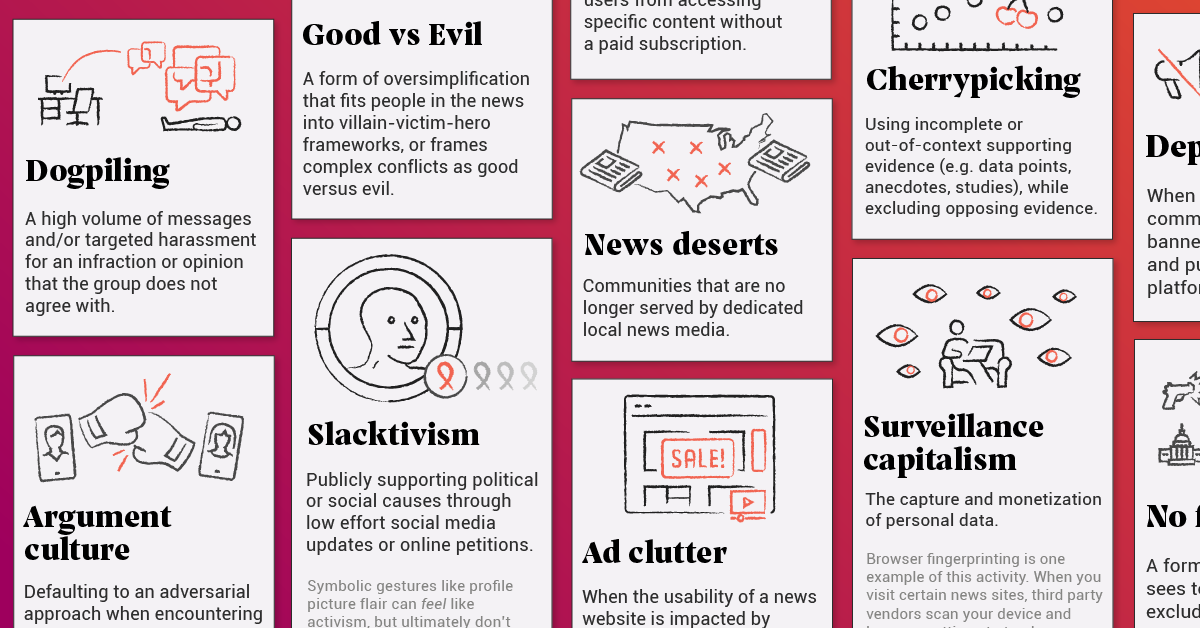
33 مشاكل مع الوسائط في مخطط واحد
من السمات المميزة للمجتمع الديمقراطي وجود نظام إعلامي صحي وحر التدفق.
في الماضي ، كان هذا النظام الإعلامي يشمل العديد من وسائل الإعلام ، من الصحف إلى شبكات تلفزيون الكابل. اليوم ، وسعت الإنترنت ومنصات الوسائط الاجتماعية بشكل كبير من نطاق ومدى التواصل داخل المجتمع.
بالطبع ، تلعب الصحافة دورًا رئيسيًا في هذا النظام البيئي. الصحافة عالية الجودة والشفافية غير المسبوقة لوسائل الإعلام الاجتماعية تحافظ على هياكل السلطة تحت السيطرة - وفي بعض الأحيان ، يمكن لهذه القوى أن تقود التغيير المجتمعي الحقيقي. يجلب لنا الصحفيون الأخبار من الخطوط الأمامية للصراع ، ويكشفون الحقائق الصعبة من خلال الصحافة الاستقصائية.
ومع ذلك ، فإن هذه الآثار الإيجابية تطغى في بعض الأحيان على الممارسات الضارة والعوامل الخارجية السلبية التي تحدث في النظام البيئي لوسائل الإعلام.
The graphic above is an attempt to catalog problems within the media ecosystem as a basis for discussion. Many of the problems are easy to understand once they’re identified. However, in some cases, there is an interplay between these issues that is worth digging into. Below are a few of those instances.
Editor’s note: For a full list of sources, please go to the end of this article. If we missed a problem, let us know!
Explicit Bias vs. Implicit Bias
Broadly speaking, bias in media breaks down into two types: explicit and implicit.
Publishers with explicit biases will overtly dictate the types of stories that are covered in their publications and control the framing of those stories. They usually have a political or ideological leaning, and these outlets will use narrative fallacies or false balance in an effort to push their own agenda.
Unintentional filtering or skewing of information is referred to as implicit bias, and this can manifest in a few different ways. For example, a publication may turn a blind eye to a topic or issue because it would paint an advertiser in a bad light. These are called no fly zones, and given the financial struggles of the news industry, these no fly zones are becoming increasingly treacherous territory.
Misinformation vs. Disinformation
Both of these terms imply that information being shared is not factually sound. The key difference is that misinformation is unintentional, and disinformation is deliberately created to deceive people.
Fake news stories, and concepts like deepfakes, fall into the latter category. We broke down the entire spectrum of fake news and how to spot it, in a previous infographic.
Simplify, Simplify
Mass media and social feeds are the ultimate Darwinistic scenario for ideas.
Through social media, stories are shared widely by many participants, and the most compelling framing usually wins out. More often than not, it’s the pithy, provocative posts that spread the furthest. This process strips context away from an idea, potentially warping its meaning.
Video clips shared on social platforms are a prime example of context stripping in action. An (often shocking) event occurs, and it generates a massive amount of discussion despite the complete lack of context.
This unintentionally encourages viewers to stereotype the persons in the video and bring our own preconceived ideas to the table to help fill in the gaps.
Members of the media are also looking for punchy story angles to capture attention and prove the point they’re making in an article. This can lead to cherrypicking facts and ideas. Cherrypicking is especially problematic because the facts are often correct, so they make sense at face value, however, they lack important context.
Simplified models of the world make for compelling narratives, like good-vs-evil, but situations are often far more complex than what meets the eye.
The News Media Squeeze
It’s no secret that journalism is facing lean times. Newsrooms are operating with much smaller teams and budgets, and one result is ‘churnalism’. This term refers to the practice of publishing articles directly from wire services and public relations releases.
Churnalism not only replaces more rigorous forms of reporting—but also acts as an avenue for advertising and propaganda that is harder to distinguish from the news.
The increased sense of urgency to drive revenue is causing other problems as well. High-quality content is increasingly being hidden behind paywalls.
The end result is a two-tiered system, with subscribers receiving thoughtful, high-quality news, and everyone else accessing shallow or sensationalized content. That everyone else isn’t just people with lower incomes, it also largely includes younger people. The average age of today’s paid news subscriber is 50 years old, raising questions about the future of the subscription business model.
For outlets that rely on advertising, desperate times have called for desperate measures. User experience has taken a backseat to ad impressions, with ad clutter (e.g. auto-play videos, pop-ups, and prompts) interrupting content at every turn. Meanwhile, in the background, third-party trackers are still watching your every digital move, despite all the privacy opt-in prompts.
How Can We Fix the Problems with Media?
With great influence comes great responsibility. There is no easy fix to the issues that plague news and social media. But the first step is identifying these issues, and talking about them.
The more media literate we collectively become, the better equipped we will be to reform these broken systems, and push for accuracy and transparency in the communication channels that bind society together.
Sources and further reading:
Veils of Distortion: How the News Media Warps our Minds by John Zada
Hate Inc. by Matt Taibbi
Manufacturing Consent by Edward S. Herman and Noam Chomsky
The Truth Matters: A Citizen’s Guide to Separating Facts from Lies and Stopping Fake News in its Tracks by Bruce Bartlett
Active Measures: The Secret History of Disinformation and Political Warfare by Thomas Rid
The Twittering Machine by Richard Seymour
After the Fact by Nathan Bomey
Ten Arguments for Deleting Your Social Media Accounts Right Now by Jaron Lanier
Zucked by Roger McNamee
معاداة المجتمع: المتطرفون عبر الإنترنت ، والطوباويين التكنولوجيين ، واختراق المحادثة الأمريكية بقلـم أندرو مارانتز
وسائل الإعلام الاجتماعية محطمة بواسطة سارة براون
مشاكل وسائل الإعلام الأمريكية أكبر بكثير من الأخبار الزائفة وتصفية الفقاعات بقلم بهارات ن. أناند
ما هو الخطأ في الأخبار؟ بقلم FAIR
هل الإعلام محكوم عليه؟ بقلم بوليتيكو
تأثير الحقيقة الضمني بقلم جوردون بينيكوك وآدم بير وإيفان تي كولينز وديفيد جي راند
أكمل القراءة

الإشتراك
انضم إلى أكثر من 300000 مشترك يتلقون بريدنا الإلكتروني اليومي
جمع
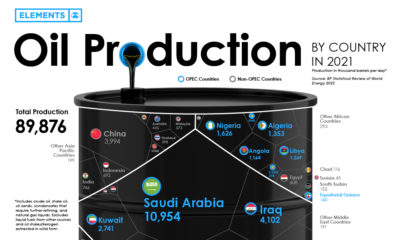
تصور أكبر منتجي النفط في العالم

ما مقدار الأراضي التي تسيطر عليها الولايات المتحدة العسكرية في كل دولة؟
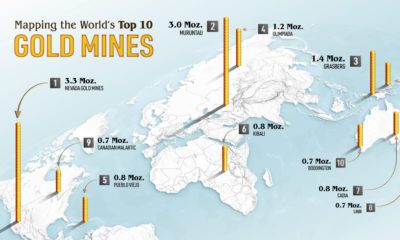
المعينة: أكبر 10 مناجم ذهب في العالم ، حسب الإنتاج
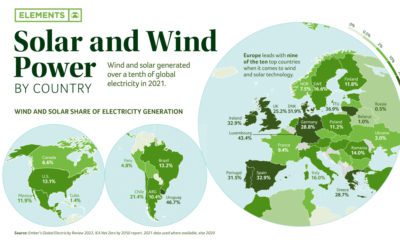
المعينة: الطاقة الشمسية وطاقة الرياح حسب الدولة

الخريطة: أسعار الغاز في أمريكا عند أعلى مستوياتها على الإطلاق
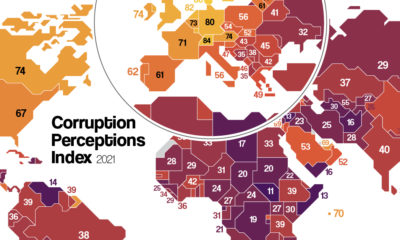
المعينة: الفساد في البلدان حول العالم
المهاجرون المفقودون: تصور الأرواح المفقودة على طول البحر الأبيض المتوسط
في كل عام ، يقوم آلاف المهاجرين برحلة على طول شرق البحر الأبيض المتوسط للوصول إلى الاتحاد الأوروبي. البعض لا يصل إلى وجهته أبدًا.
 برنامج المبدعين
برنامج المبدعيننشرت
منذ 4 أسابيع
على
4 يوليو 2022
بواسطة
كارمن انج

المهاجرون المفقودون: أرواح مفقودة على طول البحر الأبيض المتوسط
في كل عام ، يفر آلاف المهاجرين من البلدان التي مزقتها الحرب بحثًا عن اللجوء.
حتى قبل أزمة المهاجرين التي سببتها الحرب الروسية الأوكرانية ، كانت أوروبا النقطة المحورية في العقد الماضي. العديد من اللاجئين من الصراعات في أفريقيا وآسيا ، بما في ذلك من سوريا وأفغانستان والعراق ، وقد سافروا إلى أوروبا على طول طريق الهجرة شرق البحر الأبيض المتوسط - ممر خطير عبر بحر إيجه الذي ينسج على طول سواحل اليونان وتركيا.
رحلة الوصول إلى أوروبا محفوفة بالمخاطر ، وبعض المهاجرين الذين يحاولون العبور لا يجتازونها أبدًا. باستخدام بيانات من المنظمة الدولية للهجرة (IOM) ، تصور هذه الخريطة التي أعدها Elbie Bentley الوفيات والاختفاء المبلغ عنها على طول شرق البحر الأبيض المتوسط من 2014 إلى 2021.
مستوحاة من أولئك الذين لم يعبروا من تأليف ليفي ويسترفيلد ، يتم التقاط كل حياة مفقودة بنقطة خاصة بها ، في محاولة لإضفاء الطابع الإنساني على البيانات.
الأزمة الأوروبية 2015
تم الإبلاغ عن 1863 حالة وفاة واختفاء على طول شرق البحر الأبيض المتوسط بين عامي 2014 و 2021.
جاء ما يقرب من نصف هذه التسجيلات من عام 2015 أثناء أزمة المهاجرين الأوروبية ، عندما طلب مليون شخص اللجوء في الاتحاد الأوروبي ، وهو رقم قياسي .
سافر حوالي 800 ألف من أصل مليون مهاجر إلى اليونان عبر تركيا ، مع فرار العديد من اللاجئين من الحرب الأهلية في سوريا.
أزمة المهاجرين الأوروبيين حسب السنة حالات الوفاة والاختفاء المبلغ عنها
2014 101
2015 804
2016 434
2017 62
2018 174
2019 71
2020 106
2021 111
In an attempt to control the situation, the EU and Turkey signed a migration deal in March 2016 that agreed to send back migrants who did not receive official permission to enter the EU.
Though the agreement drastically reduced the number of people traveling through Turkey to Greece, thousands still make the dangerous journey across the Aegean Sea each year. In 2021, 111 people were reported dead or missing along the Eastern Mediterranean.
The Dangerous Journey
According to the International Organization for Migration, the most common cause of death along the Eastern Mediterranean is drowning.
While the journey is only 5.4 nautical miles or less, transportation conditions to Greece are not always safe. Boats are sometimes forced into tumultuous waters, according to migrants who’ve experienced the journey firsthand.
And these boats are often severely underequipped and overcrowded—rubber dinghies designed to carry a dozen people are sometimes loaded with up to 60 passengers.
Safer means of transportation are available, but the costs are steep. According to Frontex, the European Border and Coast Guard Agency, it could cost a family an average of €10,000 to travel by yacht.
Rescue Efforts for Migrants is Needed
Further complicating the dangerous journey is a lack of rescue resources.
وفقًا لتقرير عام 2021 الصادر عن المنظمة الدولية للهجرة ، لا يوجد لدى الاتحاد الأوروبي حاليًا فريق بحث وإنقاذ متخصص. بدلاً من ذلك ، يقع العبء على الدول الفردية للقيام بدوريات في مياهها.
إلى أن تتم معالجة الأزمة بشكل أفضل أو تبدأ النزاعات المحلية في حلها ، ستكون هناك حاجة ملحة لزيادة عمليات الإنقاذ وبروتوكول هجرة موحد للمساعدة في التخفيف من عدد وفيات واختفاء المهاجرين كل عام.
أكمل القراءة
تكنولوجيا
33 مشاكل مع الوسائط في مخطط واحد
في مخطط المعلومات هذا ، قمنا بفهرسة 33 مشكلة في النظام البيئي الاجتماعي ووسائل الإعلام.
نشرت
1 قبل شهر
على
29 يونيو 2022
بواسطة
نيك روتلي

33 مشاكل مع الوسائط في مخطط واحد
من السمات المميزة للمجتمع الديمقراطي وجود نظام إعلامي صحي وحر التدفق.
في الماضي ، كان هذا النظام الإعلامي يشمل العديد من وسائل الإعلام ، من الصحف إلى شبكات تلفزيون الكابل. اليوم ، وسعت الإنترنت ومنصات الوسائط الاجتماعية بشكل كبير من نطاق ومدى التواصل داخل المجتمع.
بالطبع ، تلعب الصحافة دورًا رئيسيًا في هذا النظام البيئي. الصحافة عالية الجودة والشفافية غير المسبوقة لوسائل الإعلام الاجتماعية تحافظ على هياكل السلطة تحت السيطرة - وفي بعض الأحيان ، يمكن لهذه القوى أن تقود التغيير المجتمعي الحقيقي. يجلب لنا الصحفيون الأخبار من الخطوط الأمامية للصراع ، ويكشفون الحقائق الصعبة من خلال الصحافة الاستقصائية.
ومع ذلك ، فإن هذه الآثار الإيجابية تطغى في بعض الأحيان على الممارسات الضارة والعوامل الخارجية السلبية التي تحدث في النظام البيئي لوسائل الإعلام.
The graphic above is an attempt to catalog problems within the media ecosystem as a basis for discussion. Many of the problems are easy to understand once they’re identified. However, in some cases, there is an interplay between these issues that is worth digging into. Below are a few of those instances.
Editor’s note: For a full list of sources, please go to the end of this article. If we missed a problem, let us know!
Explicit Bias vs. Implicit Bias
Broadly speaking, bias in media breaks down into two types: explicit and implicit.
Publishers with explicit biases will overtly dictate the types of stories that are covered in their publications and control the framing of those stories. They usually have a political or ideological leaning, and these outlets will use narrative fallacies or false balance in an effort to push their own agenda.
Unintentional filtering or skewing of information is referred to as implicit bias, and this can manifest in a few different ways. For example, a publication may turn a blind eye to a topic or issue because it would paint an advertiser in a bad light. These are called no fly zones, and given the financial struggles of the news industry, these no fly zones are becoming increasingly treacherous territory.
Misinformation vs. Disinformation
Both of these terms imply that information being shared is not factually sound. The key difference is that misinformation is unintentional, and disinformation is deliberately created to deceive people.
Fake news stories, and concepts like deepfakes, fall into the latter category. We broke down the entire spectrum of fake news and how to spot it, in a previous infographic.
Simplify, Simplify
Mass media and social feeds are the ultimate Darwinistic scenario for ideas.
Through social media, stories are shared widely by many participants, and the most compelling framing usually wins out. More often than not, it’s the pithy, provocative posts that spread the furthest. This process strips context away from an idea, potentially warping its meaning.
Video clips shared on social platforms are a prime example of context stripping in action. An (often shocking) event occurs, and it generates a massive amount of discussion despite the complete lack of context.
This unintentionally encourages viewers to stereotype the persons in the video and bring our own preconceived ideas to the table to help fill in the gaps.
Members of the media are also looking for punchy story angles to capture attention and prove the point they’re making in an article. This can lead to cherrypicking facts and ideas. Cherrypicking is especially problematic because the facts are often correct, so they make sense at face value, however, they lack important context.
Simplified models of the world make for compelling narratives, like good-vs-evil, but situations are often far more complex than what meets the eye.
The News Media Squeeze
It’s no secret that journalism is facing lean times. Newsrooms are operating with much smaller teams and budgets, and one result is ‘churnalism’. This term refers to the practice of publishing articles directly from wire services and public relations releases.
Churnalism not only replaces more rigorous forms of reporting—but also acts as an avenue for advertising and propaganda that is harder to distinguish from the news.
The increased sense of urgency to drive revenue is causing other problems as well. High-quality content is increasingly being hidden behind paywalls.
The end result is a two-tiered system, with subscribers receiving thoughtful, high-quality news, and everyone else accessing shallow or sensationalized content. That everyone else isn’t just people with lower incomes, it also largely includes younger people. The average age of today’s paid news subscriber is 50 years old, raising questions about the future of the subscription business model.
For outlets that rely on advertising, desperate times have called for desperate measures. User experience has taken a backseat to ad impressions, with ad clutter (e.g. auto-play videos, pop-ups, and prompts) interrupting content at every turn. Meanwhile, in the background, third-party trackers are still watching your every digital move, despite all the privacy opt-in prompts.
How Can We Fix the Problems with Media?
With great influence comes great responsibility. There is no easy fix to the issues that plague news and social media. But the first step is identifying these issues, and talking about them.
The more media literate we collectively become, the better equipped we will be to reform these broken systems, and push for accuracy and transparency in the communication channels that bind society together.
Sources and further reading:
Veils of Distortion: How the News Media Warps our Minds by John Zada
Hate Inc. by Matt Taibbi
Manufacturing Consent by Edward S. Herman and Noam Chomsky
The Truth Matters: A Citizen’s Guide to Separating Facts from Lies and Stopping Fake News in its Tracks by Bruce Bartlett
Active Measures: The Secret History of Disinformation and Political Warfare by Thomas Rid
The Twittering Machine by Richard Seymour
After the Fact by Nathan Bomey
Ten Arguments for Deleting Your Social Media Accounts Right Now by Jaron Lanier
Zucked by Roger McNamee
معاداة المجتمع: المتطرفون عبر الإنترنت ، والطوباويين التكنولوجيين ، واختراق المحادثة الأمريكية بقلـم أندرو مارانتز
وسائل الإعلام الاجتماعية محطمة بواسطة سارة براون
مشاكل وسائل الإعلام الأمريكية أكبر بكثير من الأخبار الزائفة وتصفية الفقاعات بقلم بهارات ن. أناند
ما هو الخطأ في الأخبار؟ بقلم FAIR
هل الإعلام محكوم عليه؟ بقلم بوليتيكو
تأثير الحقيقة الضمني بقلم جوردون بينيكوك وآدم بير وإيفان تي كولينز وديفيد جي راند
أكمل القراءة

الإشتراك
انضم إلى أكثر من 300000 مشترك يتلقون بريدنا الإلكتروني اليومي
جمع

الأسواقمن 3 اسابيع
الاقتصاد العالمي البالغ 100 تريليون دولار في مخطط واحد

التركيبة السكانية1 قبل أسبوع
التصنيف: البلدان العشرين ذات الأسرع تراجعا في عدد السكان
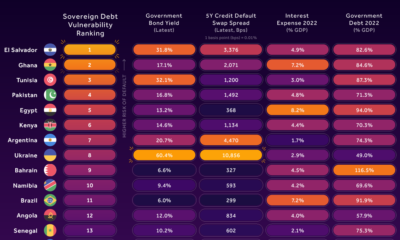
تعليم المستثمرمن 3 اسابيع
البلدان التي لديها أعلى مخاطر تقصير في عام 2022

تمويل شخصيمنذ 4 أسابيع
ما الذي يتطلبه الأمر لتصبح ثريًا في أمريكا؟
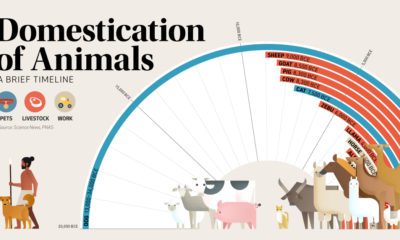
زراعة1 قبل أسبوع
الجدول الزمني: تدجين الحيوانات

طاقة2 منذ أيام
تصور أكبر منتجي النفط في العالم
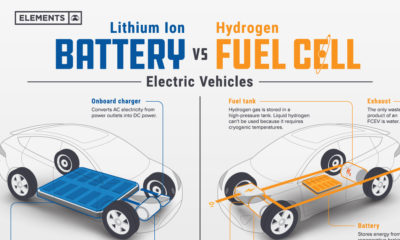
طاقة2 منذ أسابيع
تصور: البطارية مقابل البطارية. خلية وقود الهيدروجين
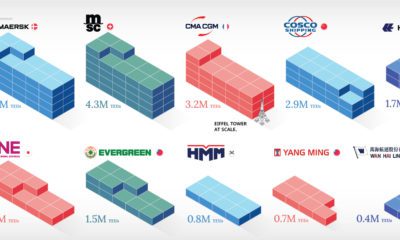
اعمالقبل 4 أيام
المرتبة: أكبر شركات شحن الحاويات في العالم
التعديل الأخير:
التطبيقات الأكثر تنزيلاً على مستوى العالم
2022/05/13أرقام
شارك
تصدر "تيك توك" – التابع للصينية "بايت دانس" – قائمة التطبيقات الأكثر تنزيلاً على مستوى العالم في الربع الأول من عام 2022 عبر متاجر التطبيقات "جوجل بلاي" و"آبل آب ستور"، وفقًا لتقرير حديث صادر عن "سينسور تاور".
وأوضح التقرير أن عدد إجمالي تنزيلات التطبيقات حول العالم بلغ 36.9 مليار في الربع الأول من عام 2022، بارتفاع 1.4% مقارنة بنفس الفترة من العام الماضي.

وكانت غالبية التطبيقات العشرة الأكثر تنزيلاً عبارة عن منصات تواصل اجتماعي، إذ تمتلك "ميتا" و"بايت دانس" ستة من العشرة الأوائل.
وتعد الأربع منصات التابعة لـ"ميتا" هي "إنستاجرام" و"فيسبوك"، و"واتس آب"، و"ماسنجر"، في حين تمتلك "بايت دانس" تطبيقي "تيك توك" ومنصة تحرير الفيديو "كاب كات".
التطبيقات الأكثر تنزيلاً على مستوى العالم في الربع الأول
الترتيب
التطبيق
01
تيك توك
02
إنستاجرام
03
فيسبوك
04
واتس آب
05
شوبي
06
تيليجرام
07
سناب شات
08
ماسنجر
09
كاب كات
10
سبوتيفاي
المصدر: فيجوال كابيتاليست
2022/05/13أرقام
شارك
تصدر "تيك توك" – التابع للصينية "بايت دانس" – قائمة التطبيقات الأكثر تنزيلاً على مستوى العالم في الربع الأول من عام 2022 عبر متاجر التطبيقات "جوجل بلاي" و"آبل آب ستور"، وفقًا لتقرير حديث صادر عن "سينسور تاور".
وأوضح التقرير أن عدد إجمالي تنزيلات التطبيقات حول العالم بلغ 36.9 مليار في الربع الأول من عام 2022، بارتفاع 1.4% مقارنة بنفس الفترة من العام الماضي.

وكانت غالبية التطبيقات العشرة الأكثر تنزيلاً عبارة عن منصات تواصل اجتماعي، إذ تمتلك "ميتا" و"بايت دانس" ستة من العشرة الأوائل.
وتعد الأربع منصات التابعة لـ"ميتا" هي "إنستاجرام" و"فيسبوك"، و"واتس آب"، و"ماسنجر"، في حين تمتلك "بايت دانس" تطبيقي "تيك توك" ومنصة تحرير الفيديو "كاب كات".
التطبيقات الأكثر تنزيلاً على مستوى العالم في الربع الأول
الترتيب
التطبيق
01
تيك توك
02
إنستاجرام
03
فيسبوك
04
واتس آب
05
شوبي
06
تيليجرام
07
سناب شات
08
ماسنجر
09
كاب كات
10
سبوتيفاي
المصدر: فيجوال كابيتاليست
تغريدات أطول ومحتوى مرئي وتواصل مع الجيران .. أفضل بدائل "تويتر"
2022/05/13أرقام
شارك
يعد موقع "تويتر" إحدى أشهر منصات التواصل الاجتماعي، بقاعدة مستخدمين كبيرة تضم رؤساء دول ورجال أعمال ومشاهير وأشخاصاً عاديين، يستفيدون جميعاً من مزايا التطبيق، بما في ذلك إمكانية معرفة آخر الأخبار في الشؤون الجارية، والسياسة، والترفيه، والرياضة، وغيرها.
لكن رغم الشعبية الهائلة التي يتمتع بها التطبيق، إلا أن بعض المستخدمين لا يستمتعون بتصفحه، لما له من عيوب بالنسبة لهم، بما فيها محدودية الأحرف التي يمكن كتابتها في منشوراته، وكثرة الحسابات المزيفة عليه، وغير ذلك من عيوب.
ولحسن الحظ هناك بدائل أخرى للموقع بالنسبة لأولئك الذين يفكرون في عدم استخدام "تويتر" لأي سبب من الأسباب، لكنهم في نفس الوقت يرغبون في الحفاظ على تواجدهم على منصات التواصل الاجتماعي.
1- تمبلر " Tumblr"

ADVERTISING
تأسست منصة "تمبلر" التي تحظى بشعبية كبيرة عام 2007، وتركز هذه المنصة التي تستضيف 406.9 مليون مدونة على المحتوى المرئي أكثر من الكلمات، وبالتالي فهي خيار مثالي لأولئك الذين يرغبون في الترويج لمنتجاتهم وخدماتهم باستخدام صور جميلة، أو أولئك الذين يريدون استعراض مهاراتهم في التصوير الفوتوغرافي.
2- إنستجرام "Instagram"

يحظى تطبيق "إنستجرام" أيضاً بشعبية هائلة، ويمكن أن يستخدمه الأشخاص لنشر صور لهم من حياتهم الشخصية، أو الترويج لمنتجاتهم وخدماتهم وعلاماتهم التجارية، والوصول إلى عدد أكبر من العملاء، خاصة أن عدداً كبيراً من الجيل الأصغر عمراً يستخدمونه.
3- نيكست دور "NextDoor"

في حين يستخدم كثيرون مواقع التواصل الاجتماعي لتكوين صداقات مع الغرباء، إلا أن البعض يفضلون التواصل مع أصدقائهم والأشخاص القريبين منهم، الأمر الذي يوفره تطبيق "نيكست دور"، المصمم خصيصاً لتسهيل التواصل بين الأشخاص الذين يعيشون في نفس المنطقة، وأيضاً تسهيل وصول الأشخاص للشركات والأعمال التجارية الموجودة في منطقتهم.
4- مايندز "Minds"

تأسست هذه المنصة عام 2011، وتتسم بجمعها بين مزايا العديد من مواقع التواصل الاجتماعي، إذ يمكن للمستخدمين نشر مقاطع الفيديو أو منشورات المدونات، أو الصور، أو تغيير حالاتهم، كما يمكنهم مشاركة وجهات نظرهم حول الموضوعات الشائعة تماماً مثل "تويتر"، ويمكن أيضاً أن يكسب الأشخاص الذين ينشئون محتوى على المنصة أموالاً (بالعملات المشفرة أو بالدولار) من متابعيهم.
5- بلارك "Plurk"

تأسست منصة التدوين "بلارك" عام 2008، وهي مشابهة بشكل كبير لـ"فيسبوك" و"تويتر"، فيمكن للمستخدمين مشاركة منشوراتهم، وتصفح منشورات متابعيهم والتعليق عليها.
وتتيح المنصة للمستخدمين كتابة 350 حرفاً في منشوراتهم، أي أكثر من الحروف التي يتيحها موقع "تويتر"، كما تتيح لهم الدردشة داخل مجموعات، وإرسال رسائل إلى أصدقائهم، فهي خيار مثالي لمن يريد تطبيقاً مشابهاً لـ"تويتر".
6- ماستدون "Mastodon"

يعد تطبيق "ماستدون" بديلاً لا مركزي ومفتوح المصدر لـ "تويتر"، لكنه يتيح عدد أحرف أكثر منه (500 حرف)، ورغم تشابهه مع "تويتر"، إلا أنه يعمل بطريقة مختلفة عنه، إذ يضم هذا التطبيق مجتمعات لها قواعدها وسياساتها المختلفة، لكنهم يعملون معاً جميعاً باستخدام البيانات المشتركة.
7- أمينو "Amino"

تشبه منصة "أمينو" إلى حد كبير "ماستدون"، إذ تمكن المستخدمين من إدارة مجتمعات تركز على موضوعات معينة، وتتبع هذه المجتمعات سياسات أكثر صرامة من تلك الموجودة في "تويتر"، ويمكن لمديري هذه المجتمعات إنشاء اختبارات أو استطلاعات للرأي وغير ذلك من محتوى تفاعلي، والتواصل مع المستخدمين على نطاق واسع، كما توفر هذه المنصة ميزة الدردشة الصوتية.
8- رافتر "Raftr"

تتيح هذه المنصة للمستخدمين إمكانية إجراء مناقشات مع الأشخاص الذين يشاركونهم نفس الاهتمامات، وتستهدف الفئة العمرية التي تتراوح بين 15 إلى 25 عاماً، وتوفر المنصة إمكانية تواصل طلاب المدارس والجامعات والمعاهد مع بعضهم البعض، لكن عيبها الوحيد أنها متاحة فقط لنظام التشغيل "آي أو إس".
9- ديسابورا "Diaspora"

تركز معظم منصات التواصل الاجتماعي مثل "فيسبوك" و"تويتر" على تحقيق الأرباح، لذلك تقوم مثل هذه المنصات بجمع بيانات المستخدمين لتقديم إعلانات أكثر فاعلية للشركات الأخرى، لكن ذلك لا ينطبق على منصة "ديسابورا" غير الربحية والتي يمتلكها ويديرها المستخدمون أنفسهم، حيث لا تسمح هذه المنصة بتحقيق الدخل من استخدامها أو عرض الإعلانات عليها، كما أن الشبكة لا تجمع بيانات المستخدمين على الإطلاق.
المصدر: THE TEAL MANGO
2022/05/13أرقام
شارك
يعد موقع "تويتر" إحدى أشهر منصات التواصل الاجتماعي، بقاعدة مستخدمين كبيرة تضم رؤساء دول ورجال أعمال ومشاهير وأشخاصاً عاديين، يستفيدون جميعاً من مزايا التطبيق، بما في ذلك إمكانية معرفة آخر الأخبار في الشؤون الجارية، والسياسة، والترفيه، والرياضة، وغيرها.
لكن رغم الشعبية الهائلة التي يتمتع بها التطبيق، إلا أن بعض المستخدمين لا يستمتعون بتصفحه، لما له من عيوب بالنسبة لهم، بما فيها محدودية الأحرف التي يمكن كتابتها في منشوراته، وكثرة الحسابات المزيفة عليه، وغير ذلك من عيوب.
ولحسن الحظ هناك بدائل أخرى للموقع بالنسبة لأولئك الذين يفكرون في عدم استخدام "تويتر" لأي سبب من الأسباب، لكنهم في نفس الوقت يرغبون في الحفاظ على تواجدهم على منصات التواصل الاجتماعي.
1- تمبلر " Tumblr"

ADVERTISING
تأسست منصة "تمبلر" التي تحظى بشعبية كبيرة عام 2007، وتركز هذه المنصة التي تستضيف 406.9 مليون مدونة على المحتوى المرئي أكثر من الكلمات، وبالتالي فهي خيار مثالي لأولئك الذين يرغبون في الترويج لمنتجاتهم وخدماتهم باستخدام صور جميلة، أو أولئك الذين يريدون استعراض مهاراتهم في التصوير الفوتوغرافي.
2- إنستجرام "Instagram"

يحظى تطبيق "إنستجرام" أيضاً بشعبية هائلة، ويمكن أن يستخدمه الأشخاص لنشر صور لهم من حياتهم الشخصية، أو الترويج لمنتجاتهم وخدماتهم وعلاماتهم التجارية، والوصول إلى عدد أكبر من العملاء، خاصة أن عدداً كبيراً من الجيل الأصغر عمراً يستخدمونه.
3- نيكست دور "NextDoor"

في حين يستخدم كثيرون مواقع التواصل الاجتماعي لتكوين صداقات مع الغرباء، إلا أن البعض يفضلون التواصل مع أصدقائهم والأشخاص القريبين منهم، الأمر الذي يوفره تطبيق "نيكست دور"، المصمم خصيصاً لتسهيل التواصل بين الأشخاص الذين يعيشون في نفس المنطقة، وأيضاً تسهيل وصول الأشخاص للشركات والأعمال التجارية الموجودة في منطقتهم.
4- مايندز "Minds"

تأسست هذه المنصة عام 2011، وتتسم بجمعها بين مزايا العديد من مواقع التواصل الاجتماعي، إذ يمكن للمستخدمين نشر مقاطع الفيديو أو منشورات المدونات، أو الصور، أو تغيير حالاتهم، كما يمكنهم مشاركة وجهات نظرهم حول الموضوعات الشائعة تماماً مثل "تويتر"، ويمكن أيضاً أن يكسب الأشخاص الذين ينشئون محتوى على المنصة أموالاً (بالعملات المشفرة أو بالدولار) من متابعيهم.
5- بلارك "Plurk"

تأسست منصة التدوين "بلارك" عام 2008، وهي مشابهة بشكل كبير لـ"فيسبوك" و"تويتر"، فيمكن للمستخدمين مشاركة منشوراتهم، وتصفح منشورات متابعيهم والتعليق عليها.
وتتيح المنصة للمستخدمين كتابة 350 حرفاً في منشوراتهم، أي أكثر من الحروف التي يتيحها موقع "تويتر"، كما تتيح لهم الدردشة داخل مجموعات، وإرسال رسائل إلى أصدقائهم، فهي خيار مثالي لمن يريد تطبيقاً مشابهاً لـ"تويتر".
6- ماستدون "Mastodon"

يعد تطبيق "ماستدون" بديلاً لا مركزي ومفتوح المصدر لـ "تويتر"، لكنه يتيح عدد أحرف أكثر منه (500 حرف)، ورغم تشابهه مع "تويتر"، إلا أنه يعمل بطريقة مختلفة عنه، إذ يضم هذا التطبيق مجتمعات لها قواعدها وسياساتها المختلفة، لكنهم يعملون معاً جميعاً باستخدام البيانات المشتركة.
7- أمينو "Amino"

تشبه منصة "أمينو" إلى حد كبير "ماستدون"، إذ تمكن المستخدمين من إدارة مجتمعات تركز على موضوعات معينة، وتتبع هذه المجتمعات سياسات أكثر صرامة من تلك الموجودة في "تويتر"، ويمكن لمديري هذه المجتمعات إنشاء اختبارات أو استطلاعات للرأي وغير ذلك من محتوى تفاعلي، والتواصل مع المستخدمين على نطاق واسع، كما توفر هذه المنصة ميزة الدردشة الصوتية.
8- رافتر "Raftr"

تتيح هذه المنصة للمستخدمين إمكانية إجراء مناقشات مع الأشخاص الذين يشاركونهم نفس الاهتمامات، وتستهدف الفئة العمرية التي تتراوح بين 15 إلى 25 عاماً، وتوفر المنصة إمكانية تواصل طلاب المدارس والجامعات والمعاهد مع بعضهم البعض، لكن عيبها الوحيد أنها متاحة فقط لنظام التشغيل "آي أو إس".
9- ديسابورا "Diaspora"

تركز معظم منصات التواصل الاجتماعي مثل "فيسبوك" و"تويتر" على تحقيق الأرباح، لذلك تقوم مثل هذه المنصات بجمع بيانات المستخدمين لتقديم إعلانات أكثر فاعلية للشركات الأخرى، لكن ذلك لا ينطبق على منصة "ديسابورا" غير الربحية والتي يمتلكها ويديرها المستخدمون أنفسهم، حيث لا تسمح هذه المنصة بتحقيق الدخل من استخدامها أو عرض الإعلانات عليها، كما أن الشبكة لا تجمع بيانات المستخدمين على الإطلاق.
المصدر: THE TEAL MANGO
أما في منطقة الشرق الاوسط
فهذا هو بيئتها
https://www.google.com/search?q=حي+...ome..69i57.55974j0j4&sourceid=chrome&ie=UTF-8
فهذا هو بيئتها
https://www.google.com/search?q=حي+...ome..69i57.55974j0j4&sourceid=chrome&ie=UTF-8
مؤشر الديمقراطية
من ويكيبيديا، الموسوعة الحرةاذهب إلى التنقلاذهب إلى البحث
 لمعانٍ أخرى، طالع مؤشر (توضيح).
لمعانٍ أخرى، طالع مؤشر (توضيح).
خريطة مؤشر الديموقراطية لعام 2017 من تصنيف وحدة استخبارات الإيكونومست.[1]
| ديموقراطيات كاملة 9–10 8–8.9 | ديموقراطيات بها خلل 7–7.9 6–6.9 | أنظمة هجينة 5–5.9 4–4.9 | أنظمة تسلطية 3–3.9 2–2.9 0–1.9 |
وفقاً لأحدث إصدار للمؤشر، عام 2011 ، سجلت النرويج ما مجموعه 9.80 نقطة على مقياس يتراوح ما بين 0 إلى 10، وهكذا حافظت على مكانتها من عام 2010، عندما حلت محل السويد البلد الأعلى مرتبة وفقاً لذلك المؤشر.حيث كانت السويد قد احتلت قمة التصنيف سنة 2008 وتراجعت إلى المركز الرابع لاحقاً، بينما احتلت كوريا الشمالية المركز الأخير في الـ 167 دولة بمجموع نقاط أقل مع 1.08، وهو نفس موقعها سنة 2010.
مؤشر الديمقراطية لعام 2011 يسلط الضوء على تأثير الربيع العربي والآثار الكبرى التي قد يكون يحملها، فضلاً عن تأثير الأزمة المالية العالمية في سبتمبر-2008 على السياسة في معظم أنحاء أوروبا. كانت نتائج مؤشر الديمقراطية في عام 2011 أقل مما كانت عليه في عام 2010 في 48 دولة من أصل 167 تناولتهم الدراسة. بينما كانت النتائج أعلى في 41 من البلدان المصنفة، وبقيت على حالها في 78 دولة أخرى.[2]
يتم تصنيف الدول حسب ذلك المؤشر إلى ديمقراطيات كاملة، وديمقراطيات معيبة، وأنظمة هجينة وأنظمة سلطوية. كان هناك تغير في نوع النظام بين عامي 2010 و2011 في تسع دول ممن تناولتهم الدراسة، وفي أربعة من تلك الدول كان هناك تراجع للديموقراطية. فقد انخفضت روسيا من نظام هجين لنظام سلطوي، والذي يعزوه التقرير إلى المخاوف بشأن انتخابات 4 ديسمبر التشريعية وقرار فلاديمير بوتين للترشح مرة أخرى في الانتخابات الرئاسية لعام 2012.[2] أيضاً تم خفض البرتغال إلى فئة الديمقراطية المعيبة، وذلك يُعزى إلى آثار الأزمة المالية العالمية. كما تم ترقية تونس إلى ديمقراطية معيبة وكل من موريتانيا ومصر والنيجر لأنظمة هجينة، وصعدت زامبيا إلى فئة الديمقراطية المعيبة.



